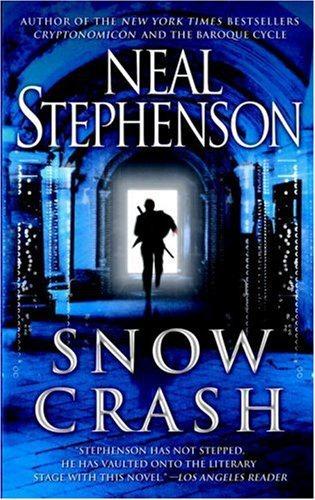
Snow Crash
by
Neal Stephenson
Published 15 Jul 2003
How bizarre." Y.T. smiles to herself. She really likes the idea of living in a world where someone like Ng can get off calling someone else bizarre. "What are you looking for?" "Snow Crash," Ng says. "Instead, we found the Ring of Seventeen." "Snow Crash is the drug that comes in the little tubes," Y.T. says. "I know that. What's the Ring of Seventeen? One of those crazy new rock groups that kids listen to nowadays?" "Snow Crash penetrates the walls of brain cells and goes to the nucleus where the DNA is stored. So for purposes of this mission, we developed a detector that would enable us to find cell wall-penetrating compounds in the air.
…
"Hey, Hiro," the black-and-white guy says, "you want to try some Snow Crash?" A lot of people hang around in front of The Black Sun saying weird things. You ignore them. But this gets Hiro's attention. Oddity the first: The guy knows Hiro's name. But people have ways of getting that information. It's probably nothing. The second: This sounds like an offer from a drug pusher. Which would be normal in front of a Reality bar. But this is the Metaverse. And you can't sell drugs in the Metaverse, because you can't get high by looking at something. The third: The name of the drug. Hiro's never heard of a drug called Snow Crash before. That's not unusual—a thousand new drugs get invented each year, and each of them sells under half a dozen brand names.
…
Hiro's trying to read some clues in the guy's face, but the closer he looks, the more his shifty black-and-white avatar seems to break up into jittering, hard-edged pixels. It's like putting his nose against the glass of a busted TV. It makes his teeth hurt. "Excuse me," Hiro says. "What did you say?" "You want to try some Snow Crash?" He has a crisp accent that Hiro can't quite place. His audio is as bad as his video. Hiro can hear cars going past the guy in the background. He must be goggled in from a public terminal alongside some freeway. "I don't get this," Hiro says. "What is Snow Crash?" "It's a drug, asshole," the guy says. "What do you think?" "Wait a minute. This is a new one on me," Hiro says. "You honestly think I'm going to give you some money here?

What Algorithms Want: Imagination in the Age of Computing
by
Ed Finn
Published 10 Mar 2017
We are not just getting logistically closer to that space of computation; we are now intimate with it, sharing our most personal memories and accepting algorithmic guidance on matters ranging from love to real estate. Snow Crash extends this story into a kind of contemporary parable for computation-as-magic. The hackers who carry this virus into the world do so because they are particularly vulnerable to a kind of neurolinguistic infection. In Snow Crash, the space of computation touches you through a kind of code, a procedural language that operates in consciousness as well as in the world. Precisely because language occupies a special status as an intellectual technology, its role as an epistemological layer or medium has interested philosophers from Plato to John Searle.
…
The corollary to this distinguishing power of language is that some incantations cannot be unheard: they permanently alter us when we interpret and understand them. In Snow Crash Stephenson imagines that the god Enki deliberately destroyed the universal system of transmission that was the Sumerian language by releasing a nam-shub virus that, “coiled like a serpent around the human brainstem,” scrambled humanity’s ability to understand other Sumerian signals.6 Linking this moment to the mythic Tower of Babel, Snow Crash makes the nam-shub a relic of a universal language once lost but now regained (and being put to nefarious use). Thus Stephenson taps into the much deeper mythos of language as incantation.
…
Clark and Chalmers, “The Extended Mind.” 52. Ibid., 8. 53. Clark, Natural-Born Cyborgs, 11. 54. Weizenbaum, Computer Power and Human Reason, 12. 55. Ibid. 56. Ibid., 16. 57. Ibid., 250. 58. Stephenson, Snow Crash, 126. 59. The Glass Cage, 82. 60. For an interesting approach to the idea of a literacy nam-shub, see Goonan, “Girl in Wave: Wave in Girl.” 61. Clark, Natural-Born Cyborgs, 69–75. Not for nothing does Clark acknowledge Stephenson’s Snow Crash in the preface to his book. 62. Ibid., 72. 63. Weizenbaum, Computer Power and Human Reason, 18. 64. Hayles, “Foreword,” vi. 65. Weizenbaum, Computer Power and Human Reason, 18. 66.
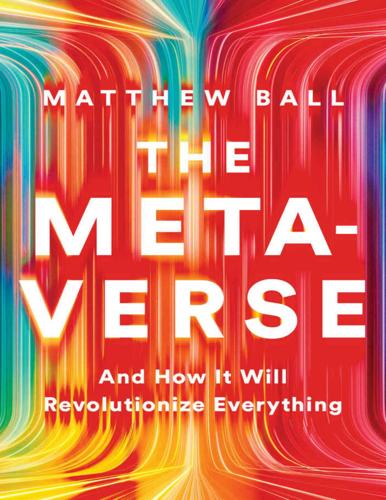
The Metaverse: And How It Will Revolutionize Everything
by
Matthew Ball
Published 18 Jul 2022
.* Stephenson’s novels have been cited as the inspiration for various cryptocurrency projects and non-cryptographic efforts to build decentralized computer networks, as well as the production of CGI-based movies which are watched at home but generated live through the motion-captured performance of actors that might be tens of thousands of miles away. Despite his far-reaching impact, Stephenson has consistently warned against a literal interpretation of his works—especially Snow Crash. In 2011, the novelist told the New York Times that “I can talk all day long about how wrong I got it”2 and, when asked about his influence on Silicon Valley by Vanity Fair in 2017, he reminded the publication to keep “in mind that [Snow Crash was written] pre-Internet as we know it, pre-Worldwide Web, just me making shit up.”3 As a result, we should be wary of reading too much into Stephenson’s specific vision. And while he coined the term “Metaverse,” he was far from the first to introduce the concept.
…
That’s why you don’t see a company that was founded to do climate research. Video games were one of the best strategic decisions we ever made.”6 Nvidia was founded only a year after Snow Crash—which the gaming community also quickly considered to be a seminal text. Despite this, Stephenson has said the emergence of the Metaverse via gaming is “the thing I totally missed in” the novel. “When I was thinking up the Metaverse, I was trying to figure out the market mechanism that would make all of this stuff affordable. Snow Crash was written when 3D imaging graphics hardware was outrageously expensive, only for a few research labs. I figured that if it were ever going to become as cheap as TV, then there would have to be a market for 3D graphics as big as the market for TV.
…
They know how to make not just a clock, but a room, a building, and a village populated by happy players. If humanity is ever to move to a “massively scaled interoperable network of real-time rendered 3D virtual worlds,” that skill is going to take us there. When discussing what he got right and wrong about the future in Snow Crash, Stephenson told Forbes that “instead of people going to bars on the Street in Snow Crash, what we have now is Warcraft guilds” which go on in-game raids.9 In the first part of this book, I’ve detailed where the term “Metaverse” and its ideas come from, the various efforts to construct it over the past several decades, as well as its importance to our future.

Life After Google: The Fall of Big Data and the Rise of the Blockchain Economy
by
George Gilder
Published 16 Jul 2018
CHAPTER 14 Blockstack It all begins with the “Metaverse” in Neal Stephenson’s 1992 novel Snow Crash,1 a vision of a virtual world on top of the real world. A quarter-century later it still excites geek romantics with its prophetic music: When Hiro first saw this place 10 years ago, the monorail hadn’t been written yet. He and his buddies had to write car and motorcycle software in order to get around. They would take their software out and race it in the black desert of the electronic night.2 Muneeb Ali quotes this passage from from Snow Crash in the opening of his magisterial dissertation, “Trust-to-Trust Design of a New Internet,” the product of his work with Ryan Shea and Jude Nelson and their Princeton adviser, Michael J.
…
Its quantum-proof protocol is known as the “Tangle.” https://blog.iota.org/the-tangle-an-illustrated-introduction-4d5eae6fe8d4. 5. Saifedean Ammous, The Bitcoin Standard (New York: Wiley, 2018). 6. Chris Burniske and Jack Tatar, Cryptoassets: The Innovative Investor’s Guide to Bitcoin and Beyond (New York: McGraw-Hill, 2018), 178–79. Chapter 14: Blockstack 1. Neal Stephenson, Snow Crash (New York: Bantam Spectra, 1992). 2. Stephenson, Snow Crash, 27. “The monorail is a free piece of public utility software that enables users to change their location on the Street rapidly and smoothly . . . ” (Ibid). 3. Muneeb Ali, “Trust-to-Trust Design of a New Internet,” (doctoral dissertation, Princeton University, June 2017), https://muneebali.com/thesis. 4.
…
LIKE REGNERY ON FACEBOOK FOLLOW US ON TWITTER Notes Prologue: Back to the Future—The Ride 1. Josiah Lee Auspitz, “The Wasp Leaves the Bottle,” The American Scholar, 2002, 602–19; Charles Sanders Peirce, Chance Love and Logic: Philosophical Essays (New York: Barnes & Noble, 1923), edited with an introduction by Morris Cohen and with an essay by John Dewey. 2. Neal Stephenson, Snow Crash (New York: Bantam Books, 1992), 24. “So Hiro’s not actually here at all. He’s in a computer-generated universe. . . . In the lingo, this imaginary place is known as the Metaverse.” 3. C. S. Lewis, The Weight of Glory and Other Addresses (New York: The Macmillan Company, 1949), 16–29. “Transposition” is the second essay. 4.
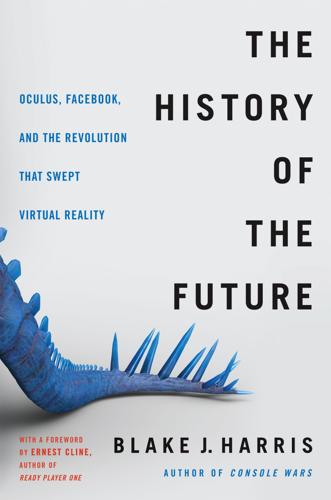
The History of the Future: Oculus, Facebook, and the Revolution That Swept Virtual Reality
by
Blake J. Harris
Published 19 Feb 2019
It had a ludicrous story line, but the movie’s depiction of virtual reality’s future potential stoked my anticipation for this evolving technology even further. So did Neal Stephenson’s novel Snow Crash, which was published the same year. I was completely floored by Stephenson’s stark vision of a sprawling virtual world called the Metaverse that millions of real people around the world were able to access with a pair of VR goggles. Snow Crash built upon the concept of cyberspace that William Gibson had introduced in his 1984 novel, Neuromancer, by extrapolating VR technology even further. With a programmer’s eye for detail, Stephenson laid out how a persistent globally networked virtual reality like the Metaverse might function.
…
I said that I had all these Microsoft options. He said that he would go talk to his partners to get some equity in the company. And when he did that, I said: you know what, I had read Snow Crash somewhat recently. So everything John was describing just seemed interesting—this opportunity just seemed interesting—and you know what? It was interesting! But I probably wouldn’t have said yes, and I probably wouldn’t be sitting here right now, if I hadn’t read Snow Crash and fallen in love with the idea of the Metaverse.” This was music to Iribe’s and Mitchell’s ears. They, too, wanted this dinner to end the same way it had in this same restaurant twenty years before: with Abrash saying yes to a new opportunity.
…
With a programmer’s eye for detail, Stephenson laid out how a persistent globally networked virtual reality like the Metaverse might function. He described its evolution and architecture, along with its culture, laws, and ecology. He also hinted at the potential social and economic side effects of living a dual life, split between the real world and a virtual one. Reading Snow Crash left my mind reeling with the implications of our virtual future. It also convinced me that the immersive VR technology depicted in the novel was probably only a few years away from becoming a reality. But it wasn’t. Aside from a few false starts and failed prototypes, virtual reality would continue to languish in an unrealized limbo, just beyond our collective reach, while the final decade of the twentieth century gave rise to a different form of world-altering technology instead—the internet.
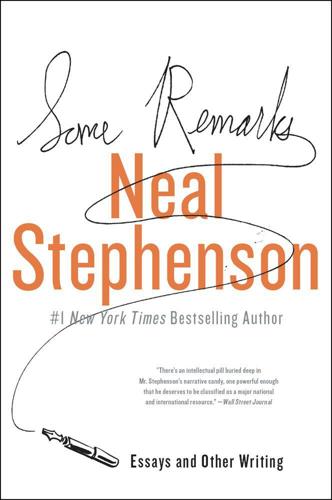
Some Remarks
by
Neal Stephenson
Published 6 Aug 2012
About the Author Neal Stephenson is the author of the bestselling Reamde; Anathem; the three-volume historical epic The Baroque Cycle (Quicksilver, The Confusion, and The System of the World); Cryptonomicon; The Diamond Age; Snow Crash, which was named one of Time magazine’s top one hundred all-time best English-language novels; and Zodiac. He lives in Seattle, Washington. Visit www.AuthorTracker.com for exclusive information on your favorite HarperCollins authors. Also by Neal Stephenson Reamde Anathem The System of the World The Confusion Quicksilver Cryptonomicon The Diamond Age Snow Crash Zodiac Permissions A version of “Slashdot Interview” previously appeared on Slashdot.org. A version of “Metaphysics in the Royal Society 1715–2010” previously appeared in Seeing Further: The Story of Science & the Royal Society edited by Bill Bryson.
…
To make a long argument short, what I have learned from Matt’s writings on the topic is that (1) it’s not a new issue, (2) it’s a First Amendment issue, and (3) it’s best in the long run, for all concerned, if vulnerabilities are exposed in public. WHO WOULD WIN? (SCORE:5, FUNNY)—BY CALL ME BLACK CLOUD In a fight between you and William Gibson, who would win? NEAL: You don’t have to settle for mere idle speculation. Let me tell you how it came out on the three occasions when we did fight. The first time was a year or two after Snow Crash came out. I was doing a reading/signing at White Dwarf Books in Vancouver. Gibson stopped by to say hello and extended his hand as if to shake. But I remembered something Bruce Sterling had told me. For, at the time, Sterling and I had formed a pact to fight Gibson. Gibson had been regrown in a vat from scraps of DNA after Sterling had crashed an LNG tanker into Gibson’s Stealth pleasure barge in the Straits of Juan de Fuca.
…
STORYGRAMMING—BY DOC RUBY You programmed computers before you wrote novels. Greg Egan shares that hyphenated career, and continues to illustrate his stories with Java applets [netspace.net.au]. Do you still program, possibly targeting the same subjects with your word processor as your compiler? As Snow Crash was originally designed as an interactive game, and such landmarks as Myst have regenerated as (usually bad) novels, do you see the arrival of a truly multimedia story, delivered simultaneously in multiple media, anytime soon? By whom, specifically or generally? NEAL: It has already happened in the form of the I Love Bees alternate reality game, which, as many of you must know, is a promotional campaign for Halo 2.
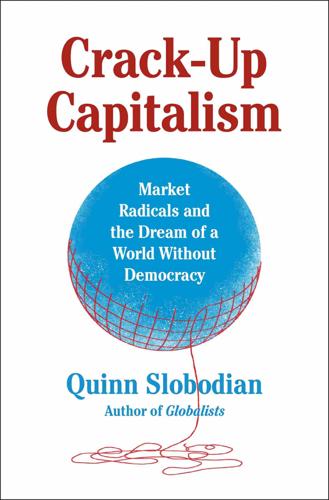
Crack-Up Capitalism: Market Radicals and the Dream of a World Without Democracy
by
Quinn Slobodian
Published 4 Apr 2023
“The usual,” the narrator remarks, and she changes the channel.86 Ntshanga expressed the pessimism of a quarter century of actually existing postapartheid, in which the state had its agency constrained by the need to attract overseas capital and betrayed too many promises. Another novelist, closer in time to Mandela’s balcony speech, took the canton model to a more radical conclusion. In two novels from the early 1990s, the American author Neal Stephenson conjured up a world very much like the libertarian fantasy. In his 1992 Snow Crash, the “New South Africa Franchulate” is an “apartheid burbclave,” a fictional version of the real-life Orania: privately owned, privately governed.87 He expanded on the vision in his next novel, The Diamond Age, which featured an Orania-like “clave” of Boers—“stocky blonds in suits or the most conservative sorts of dresses, usually with half a dozen kids in tow.”
…
In November 2021, he unveiled plans for a Bitcoin City, with power generated by a volcano, and a giant central square in the shape of the Bitcoin logo.89 Proponents of the start-up city spoke at the gathering about how Bitcoin could contribute to the dream of “opting out on every layer.”90 They were in talks with Bukele about turning it into a “free private city” even as they pursued opportunities farther south in Jair Bolsonaro’s Brazil, through the University of Chicago–educated minister of the economy Paulo Guedes.91 History shows there is always another fantasy island on the horizon. 11 A Cloud Country in the Metaverse Network types REPRODUCED WITH PERMISSION FROM PAUL BARAN, “ON DISTRIBUTED COMMUNICATIONS” (SANTA MONICA, CA: THE RAND CORPORATION, 1964), RAND REPORT: RM-3420-PR While much of the action in Neal Stephenson’s 1992 novel Snow Crash takes place in a fractured geography of gated communities, private prisons, racist enclaves, and jerry-rigged refugee ships, the heart of the plot is in a place that is a non-place: the Metaverse. Characters put on goggles and earbuds to escape their gig jobs delivering pizza or packages and traverse a virtual reality in their avatars as gorillas, samurai, or dragons.
…
This metaverse sought to meld the worlds of gaming, social media, and workplace internet use by allowing you to have identities, appearances (or “skins”), and payment systems that you could carry across platforms—from chatting with family on Facebook to sitting in an office meeting on Zoom to staging a raid in a massive multiplayer online role-playing game like Final Fantasy or World of Warcraft. In the promotional video, users played a game of cards as cartoonish avatars, and Mark Zuckerberg engaged an employee in a staged conversation as a copy of Snow Crash lay on the coffee table between them.2 Other tech companies followed suit. Microsoft bought the company that produced World of Warcraft, and the pages of the business press began to fill with a term that only science fiction readers had heard of a year before. While the term was new to many, the phenomenon was not.
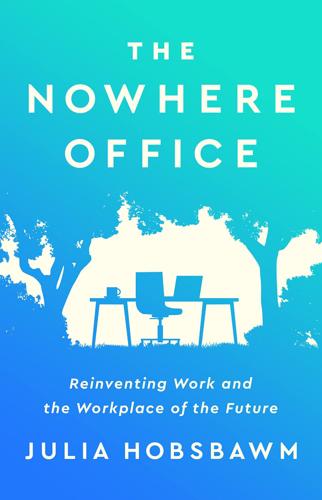
The Nowhere Office: Reinventing Work and the Workplace of the Future
by
Julia Hobsbawm
Published 11 Apr 2022
The metaverse of virtual reality became thrown into the public spotlight at the end of 2021 when Facebook’s parent company name was rebranded by Mark Zuckerberg as ‘Meta’. The original phrase was coined in Neal Stephenson’s 1992 novel, The Snow Crash; Daniel Villareal, ‘What is “Snow Crash”? Twitter Compares Facebook’s “Metaverse” Announcement to ’90s Novel’, Newsweek, 28 October 2021, https://www.newsweek.com/what-snow-crash-twitter-compares-facebooks-metaverse-announcement-90s-dystopian-sci-fi-1643690 13. Amy Greenshields, ‘Covid-19 Forces One of the Biggest Surges in Tech Investment in History, Finds World’s Largest Tech Leadership’, KPMG, 22 September 2020, https://home.kpmg/xx/en/home/media/press-releases/2020/09/covid-19-forces-one-of-the-biggest-surges-in-technology-investment-in-history-finds-worlds-largest-technology-leadership-survey.html; McKinsey, ‘Global Business-Services Sourcing Comes of Age’, 1 September 2021, https://www.mckinsey.com/business-functions/operations/our-insights/global-business-services-sourcing-comes-of-age 14.
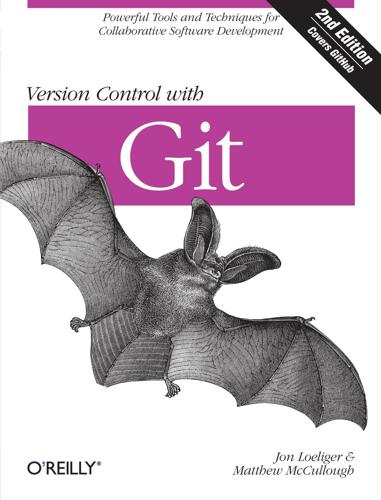
Version Control With Git: Powerful Tools and Techniques for Collaborative Software Development
by
Jon Loeliger
and
Matthew McCullough
Published 14 Aug 2012
However, by using git filter-branch, a file can be removed from any and every commit in the repository, making it appear as if it was never there in the first place. Let’s work on an example repository that contains personal notes after reading various books. The notes are stored in files named after the works. $ cd BookNotes $ ls 1984 Animal_Farm Nightfall Readme Snow_Crash $ git log --pretty=oneline --abbrev-commit ffd358c Read Asimov's 'Nightfall'. 4df8f74 Read a few classics. 8d3f5a9 Read 'Snow Crash' 3ed7354 Collect some notes about books. And the classics from the third commit 4df8f74 are: $ git show 4df8f74 commit 4df8f74b786b31b6043c44df59d7d13ee2b4b298 Author: Jon Loeliger <jdl@example.com> Date: Sat Jan 14 12:57:35 2012 -0600 Read a few classics. - Animal Farm by George Orwell - 1984 by George Orwell diff --git a/1984 b/1984 new file mode 100644 index 0000000..84a2da2 --- /dev/null +++ b/1984 @@ -0,0 +1 @@ +George Orwell is disturbed. diff --git a/Animal_Farm b/Animal_Farm new file mode 100644 index 0000000..e1fcda1 --- /dev/null +++ b/Animal_Farm @@ -0,0 +1 @@ +Animal Farm was interesting.
…
If you are a bit more clever, perhaps by piping that output through less, you can see that it actually prints each commit processed: Rewrite 3ed7354c2c8ae2678122512b26d591a9ed61663e (1/4) Rewrite 8d3f5a96b18f9795a1bb41295e5a9d2d4eb414b4 (2/4) Rewrite 4df8f74b786b31b6043c44df59d7d13ee2b4b298 (3/4) Rewrite ffd358c675a1c6d36114e10a92d93fdc1ee84629 (4/4) But it worked this time: $ ls Animal_Farm Nightfall Readme Snow_Crash The 1984 file is now gone! Tip For the terminally curious, the corresponding command using index-filter would be something like this: $ git filter-branch --index-filter \ 'git rm --cached --ignore-unmatch 1984' master Let’s look at the new commit log: $ git log --pretty=oneline --abbrev-commit ad1000b Read Asimov's 'Nightfall'. 7298fc5 Read a few classics. 8d3f5a9 Read 'Snow Crash' 3ed7354 Collect some notes about books. Notice how each commit starting with the original third commit (4df8f74 and ffd358c) now has different SHA1 values (7298fc5 and ad1000b), whereas the earlier commits (3ed7354 and 8d3f5a9) remain unchanged.
…
. $ git clone BookNotes BookNotes.revised Cloning into 'BookNotes.revised'... done. $ cd BookNotes.revised $ git filter-branch --tree-filter 'rm 1984' master Rewrite 3ed7354c2c8ae2678122512b26d591a9ed61663e (1/4) rm: cannot remove `1984': No such file or directory tree filter failed: rm 1984 $ ls 1984 Animal_Farm Nightfall Readme Snow_Crash Clearly that didn’t go well and something failed. The file is still in the repository. Let’s think a little about what Git is doing here. Git will iterate over each commit in the master branch, starting with the very first commit, establish the context (index, files, directories, etc.) of that commit, and then try to remove the file 1984.

The Weightless World: Strategies for Managing the Digital Economy
by
Diane Coyle
Published 29 Oct 1998
What’s more, this will happen at a time when technology is anyway tending to increase inequality in the industrial economies. So although politicians fret about the tax bill for the welfare state, it is inequality that presents the most serious challenge. This is where the dystopian visions derive their power. In Neal Stephenson’s Snow Crash all of Western society has been privatised. The affluent live in franchised quasi-national enclaves with their own private police forces — luckily the cops accept all major credit cards. Mr Lee’s Greater Hong Kong is one of the better quality franchises. Companies educate their own indentured workers and the Mafia is one of the major powers in the economy.
…
As this global plan advances, it increasingly demands a global depoliticisation. ... Our decoy politicians are the agents of such depoliticisation. Not necessarily by choice, but by compliance. They accept the global market’s projection concerning the future as if it were a natural law.’15 Now, this is essentially the same as the Snow Crash vision. (Berger even accuses our political leaders: ‘They would sell their grandmothers to get more cyberspace’.) It foresees a brutal market-based technocracy marked by extreme dislocation and inequality. Without sharing the view that ‘the market’ is a demonaic conspiracy, one can agree that there has been too little politics in The Weightless World 144 modern policy debates, and that too many economic decisions are made outside our democratic political structures.
…
But this falls into the trap of assuming there is a fixed pot of work available to be shared more or less fairly — the ‘lump of labour’ fallacy, as economists call it. It does not escape from the tyranny of thinking about people’s options in terms of jobs and not-jobs. For an alternative vision, let’s turn to science fiction. Neal Stephenson’s view about how people will make their way in the world in Snow Crash is at The Weightless World 232 least as plausible as the jobbist outlook. It starts with a very a distinctive and American view of the role of government. The Federal Government in a future USA has put all Federal buildings in Washington DC out to a tourism concession. ‘Government should govern.

Augmented: Life in the Smart Lane
by
Brett King
Published 5 May 2016
The word avatar is actually from Hinduism and stands for the “descent” of a deity in a terrestrial form. In Norman Spinrad’s novel Songs from the Stars (1980), the term “avatar” was used to describe a computer-generated virtual experience, but it was Neal Stephenson’s Snow Crash that cemented the use of the term in respect to computing. In Stephenson’s novel, the main character, Hiro Protagonist, discovers a pseudo-narcotic called Snow Crash, a computer virus that infects avatars in a virtual world known as the Metaverse, but in doing so carries over its effects to the human operators who are plugged into the Metaverse through VR goggles that project images onto the users’ retinas via lasers.
…
None of the above requires full artificial intelligence. A digital personal assistant or agent avatar that could carry out all of those tasks might appear to be quite intelligent, but there is a defined set of experiences it might be able to handle, just like the librarian portrayed in Neal Stephenson’s classic novel Snow Crash (1992). At some point, the capability of these agents will become so good that it will cease being Siri-like (where we laugh at her canned responses) to something we rely upon every day and solves quite complex problems. It simply doesn’t matter that it isn’t full AI. This capability is most likely to sit on top of multiple operating systems, rather than being dedicated to a specific device.
…
Samuel Butler on machine consciousness in Erewhon There are various repetitive themes in science fiction when it comes to AI. There is the concept of AI dominance, human dominance and control over AI, plus the emerging sentience of AIs along with the ethical struggles it results in. There are also AIs like the Librarian in Stephenson’s Snow Crash that, for whatever reason, have been prevented from reaching sentience. The thing is though, if you are going to talk to an AI, you are going to bestow upon it certain human characteristics. Which is why the representation of AIs has also been a consistent theme in literature, cinema and on TV.

Valley of Genius: The Uncensored History of Silicon Valley (As Told by the Hackers, Founders, and Freaks Who Made It Boom)
by
Adam Fisher
Published 9 Jul 2018
A lot of these cyberculture people were sci-fi enthusiasts, and books like Neuromancer and Snow Crash were the cultural icons. You had to read Snow Crash because if you didn’t, you weren’t up to speed on what the real thinkers were thinking about the future of tech. The future is people logging into these VR worlds and getting caught in them, that’s what Snow Crash was about. We still talk about that today. Snow Crash became the iconic cyberculture book. It described virtual reality in a more elegant way than what Jaron was doing. Chris Caen: The parties were thrown out of a collective frustration that we couldn’t make Snow Crash happen, and I joke that no book has cost the VCs more money than Snow Crash.
…
Chris Caen: The parties were thrown out of a collective frustration that we couldn’t make Snow Crash happen, and I joke that no book has cost the VCs more money than Snow Crash. Because at the time we were trying to jam these virtual worlds down a 9600-baud modem to a Pentium 60 processor, Pentium 90 if you’re lucky, and we just didn’t have the horsepower to do it, but damn, we were trying. David Levitt: Plus there was a whole rave culture growing up partly out of this, which left us scratching our heads. R. U. Sirius: It was a very rapid, almost unbelievable adoption of the rave culture by the San Francisco counterculture. That kind of surprised me a little bit. You wouldn’t think people who were either growing up with the Dead Kennedys or growing up with the Grateful Dead would immediately rush out by the thousands and fill large clubs to dance to this music with no voice and no center of attention.
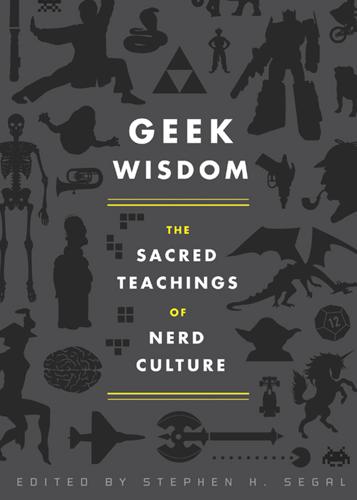
Geek Wisdom
by
Stephen H. Segal
Published 2 Aug 2011
And for the few men in their lives who saw them as individuals and valued them for their personhood, they made the world a better place. The Powerpuff Girls ran for six years (1998–2004)—longer than the age of the titular characters. “UNTIL A MAN IS TWENTY-FIVE, HE STILL THINKS, EVERY SO OFTEN, THAT UNDER THE RIGHT CIRCUMSTANCES HE COULD BE THE BADDEST MOTHERF–ER IN THE WORLD.” —NEAL STEPHENSON, SNOW CRASH THE MALE GEEK has largely made it a point of pride to distance himself from the stereotypical tough guys of the world. But the male geek is deluding himself. Fact is, we’re not all that far removed from each other, geeks and jocks. Stephenson nails why: The notion that, if circumstances were right, we could be “The Man” is the impulse that fuels male fantasies, from Mickey Mantle to Batman, from Muhammad Ali to Casanova.
…
Even if that’s just our own self-doubt pushing us to overcompensate in the realm of imagination, one thing is clear: There are times when, no matter how outlandish it seems, we’re determined to believe that maybe, just maybe, we’ truly are capable of becoming the badass we dream of. Stephenson’s Baroque Cycle has become known as his magnum opus, but Snow Crash (1992) made his name as one of the icons of cyberpunk. “I HAVE BEEN, AND ALWAYS SHALL BE, YOUR FRIEND.” —SPOCK, STAR TREK II: THE WRATH OF KHAN SPOCK’S DYING WORDS, uttered upon sacrificing his own life to save the lives of his friends Kirk and McCoy and all their crewmates, are a favorite quote used to express geek camaraderie.
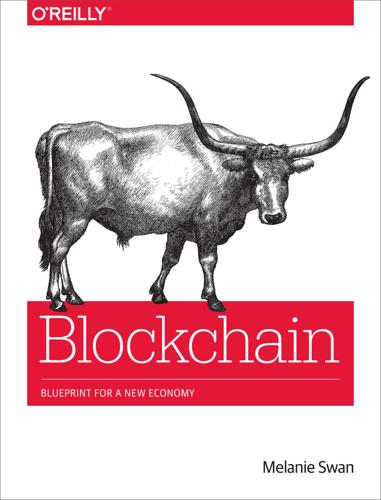
Blockchain: Blueprint for a New Economy
by
Melanie Swan
Published 22 Jan 2014
Likewise, there could be Accidentcoin that those involved in an accident pay to similarly compensate passing-by drivers for lost #QualityofLife; payment could be immediate, and shifted later as insurance companies assess blame. In science-fiction parlance, it could be said that franchulates as envisioned in Neal Stephenson’s Snow Crash are finally on the horizon.106 Franchulates are the concept of a combination of a franchise and consulate, businesses that provide fee-based quasigovernmental services consumed by individuals as any other product or service, a concept that blockchain governance could make possible. One attractive aspect of the franchulates concept is the attitudinal shift: the idea that governments need to become more like businesses and less of a default monopoly provider of government services; they should have a more proactive relationship with consumer-citizens, offering value propositions and services that are demanded and valued by different market segments of constituents.
…
BitScan, August 27, 2014. https://bitscan.com/articles/the-high-school-startup-using-blockchain-technology. 104 Cawrey, D. “How Monegraph Uses the Block Chain to Verify Digital Assets.” CoinDesk, May 15, 2014. http://www.coindesk.com/monegraph-uses-block-chain-verify-digital-assets/. 105 Snow, P. “Notary Chains” (white paper). https://github.com/NotaryChains/. 106 Stephenson, N. Snow Crash. New York: Spectra, 1992. See also: http://everything2.com/title/Franchulate. 107 Swan, M. “Illiberty in Biohacking, Personal Data Rights, Neuro-diversity, and the Automation Economy.” Broader Perspective blog, March 2, 2014. http://futurememes.blogspot.fr/2014/03/illiberty-in-biohacking-personal-data.html. 108 Prisco, G.
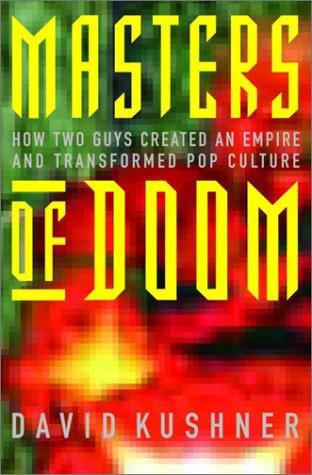
Masters of Doom: How Two Guys Created an Empire and Transformed Pop Culture
by
David Kushner
Published 2 Jan 2003
It was true, Carmack was over his previous accomplishment, just as he was over his past. Right now the next obvious step was for him to further enrich his virtual worlds. The spirit was in the air. In May 1992, when Wolfenstein was released, an author named Neal Stephenson published a book called Snow Crash, which described an inhabitable cyberspace world called the Metaverse. Science fiction, however, wasn’t inspiring Carmack’s progress; it was just his science. Technology was improving. So were his skills. 97 The opportunity to experiment came during the development of Spear of Destiny, the commercial spin-off of Wolfenstein that id was now making tor FormGen.
…
Marshall McLuhan wrote in the sixties that “a society without games is one sunk in the zombie trance of the automaton… Games are 143 popular art, collective, social reactions to the main drive or actions of any culture… The games of a people reveal a great deal about them… [They] are a sort of artificial paradise like Disneyland or some Utopian vision by which we interpret and complete the meaning of our daily lives.” By 1994 there was no more Utopian vision of a game than the Holodeck. And the dream of this virtual world simulator on Star Trek was inching from science fiction to reality. Neal Stephensons sci-fi novel Snow Crash, published in 1992, imagined the Metaverse–an alternate reality similar to the “cyberspace” envisioned in William Gibson’s 1984 novel, Neuromancer. The Internet was taking off, capable of connecting humans into such a domain. Arcades buzzed with virtual reality games–unseemly machines with big, clunky headsets that, for about five dollars, immersed a player in a firstperson polygon world.
…
The challenge, as Abrash heard it, was to increase cyberspace through 3-D graphics and a persistent online world– an alternate world that would live and breathe around the clock, waiting for players to cohabit. Abrash’s blood pulsed. Like most graphics programmers, 152 he often theorized about virtual worlds. When he read Snow Crash and the description of the Metaverse, he’d thought, I know how to do 80 percent right now–at least theoretically. There was no question in his mind that he was sitting across from a twenty-four-year-old who had the skills and confidence to make it happen. When Abrash mentioned how after a project he always wondered it he could do anything quite as good again, Carmack narrowed his brow and said, “I never wonder that.
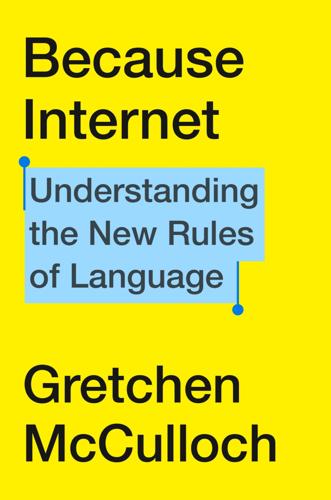
Because Internet: Understanding the New Rules of Language
by
Gretchen McCulloch
Published 22 Jul 2019
But the lack of a body is also writing’s greatest disadvantage, especially when it comes to representing emotions and other mental states. In the early days of going online, it seemed like we had a very clear eventual answer to the question of virtual embodiment. In the future envisioned by Neal Stephenson’s 1992 novel Snow Crash, or the 3D virtual world Second Life, launched in 2003, it seemed like we’d all be making full-bodied avatars for ourselves, with hands and feet and hairstyles, to bodily interact with each other in virtual space. The idea was that these avatars would project in cyberspace whatever we’d do in the physical world, whether logistical or emotive: thus we’d enter rooms and shake hands and roll on the floor laughing.
…
Second Life made a lot of headlines, but it remained popular only in a smallish subcommunity of internet users, and similar efforts are even more obscure. The closest thing most of us have to a social avatar is the profile picture we use on social media apps—hardly the ambitious three-dimensional graphics that Second Life or Snow Crash imagined. True, profile pictures do provide some sense of who you’re talking to and what they (or their dog) look like. But they’re static. My profile pic has the same fixed, photographic smile, regardless of the message I type beside it. What we really need is a dynamic system. Punctuation is good at representing tone of voice, but we’re still missing something, something embodied.
…
See also all caps shruggie, 179, 184 silent letters added to words, 45 skill levels with technology of Full Internet People cohort, 83–84 of Old Internet People cohort, 69, 70–71, 73 of Post Internet People cohort, 106 of Pre Internet People cohort, 94 relationship with internet socialization and, 84 of Semi Internet People cohort, 88 Skype, 94 Slack, 217 slang adolescents’ use of, 59–60 in chat messaging, 216 exposure to terms, 30, 58 Jargon File, 71–73, 87 leetspeak, 125 and Pre Internet People cohort, 95 and Semi Internet People cohort, 90 use of outdated, 149 and variant definitions, 135–36 smartphones, 7, 141, 216, 235 smileys in court cases, 194 as cues about intention, 186–88 and friendships via chat, 74–75 noses on, 178–79 origins of, 176–78 and Pre Internet People cohort, 95 as social lubricants, 125 See also emoticons Smirnov, Ivan, 57–58 “smol” (small), 22 Snapchat, 164, 216, 222 snek meme, 249, 250 Snow Crash (Stephenson), 156 social function of internet for Full Internet People cohort, 77, 78, 82, 100, 103 for Old Internet People cohort, 68–69, 70, 73–75 as perceived by different cohorts, 77, 82 for Post Internet People cohort, 100, 103, 107 for Pre Internet People cohort, 99 for Semi Internet People cohort, 85, 89–90 social identity, 50 social media age requirements for, 101 and age of user, 85 and context collapse issue, 103 disappearing content on, 104, 222–23 editing of posts on, 215 and Full Internet People cohort, 78, 83 and hashtags, 128–30 hate speech on, 234 lack of visible cues on, 229 liking posts, 188–89 losing track of time on, 223 managing group behavior on, 234–35 in non-English languages, 270 and platform switching, 103 popularity of, 222 posts, similarities with postcards and recipe cards, 98–99 and Pre Internet People cohort, 93 privacy/obscurity management on, 230–34 status updates on, 222, 227, 229–35 strong/weak ties in, 39 third-place functions of, 223, 227, 228 and Third Wave of Internet People, 93 time spent on, 222 and youth, 29–30, 226 See also memes; specific platforms, including Facebook Socially Awkward Penguin meme, 257 space-stretched typography, 145, 146 sparkle punctuation sparkle enthusiasm, 127–28, 135 sparkle sarcasm, 137–39, 149 spellcheckers, 46–47, 49, 61 spelling standards, 46–47, 49–50.

Hit Refresh: The Quest to Rediscover Microsoft's Soul and Imagine a Better Future for Everyone
by
Satya Nadella
,
Greg Shaw
and
Jill Tracie Nichols
Published 25 Sep 2017
Engelbart’s Law states that the rate of human performance is exponential; that while technology will augment our capabilities, our ability to improve upon improvements is a uniquely human endeavor. He essentially founded the field of human-computer interaction. There are many other visionaries who influenced me and the industry, but around the time I joined Microsoft in 1992, two futuristic novels were being eagerly consumed by engineers all over campus. Neal Stephenson’s Snow Crash popularized the term metaverse, envisioning a collective virtual and shared space. David Gelernter wrote Mirror Worlds, foreseeing software that would revolutionize computing and transform society by replacing reality with a digital imitation. These ideas are now within sight. * * * It is a magical feeling, at least for me, the first time you experience a profound new technology.
…
See also specific products Seattle Children’s Hospital, 8, 41–42 Seattle Seahawks, 4 security, 169–80, 191–94, 202, 205, 224, 227–28, 238 senior leadership team (SLT), 2–6, 10–11, 81–82 sensors, 13, 79, 147–48, 150 September 11, 2001 attacks, 172 Serling, Rod, 159 server and tools business (STB), 53–59 servers, 2, 45, 139 edge of cloud and, 89 private vs. cloud-based, 57 privacy and security and, 173, 176 service sector, 240 Shaikh, Saqib, 200 Snapchat Spectacles, 145 Shaw, Frank, 98, 99 Shenzhen, 229 Shin, Jong-Kyon (J.K.), 133 Shum, Harry, 3, 51–52, 82 Sikhs, 19 silicon photonics, 228 Silicon Valley, 12, 21, 24, 26–27 silos, 57, 102 Sinclair ZX Spectrum kit, 21 Siri, 201 Sirosh, Joseph, 59 skills development, 226–27, 240 Skype, 64, 121, 155, 164, 171 Skype Translator, 59 small firms, 217 smartphones, 45, 66, 73, 132–34. See also mobile phones; and specific products Smith, Brad, 3, 131, 170–71, 173, 189 SMS, 216 Snapchat, 193 Snapdeal, 33 Snow Crash (Stephenson), 143 Snowden, Edward, 172–73, 179–80 Social Connector, 137 social contract, 239 socioeconomic change, 12–13 software design, 27, 49 software engineering, 74 solar, wind, and tidal power, 43, 228 Sony, 28 Sony Pictures Entertainment, 169–70, 177, 179, 189 Soul of a New Machine, The (Kidder), 68 South Zone, 37, 115 sovereignty, 170 space exploration, 145–46 Spain, 215 spam filters, 158 speech recognition, 76, 89, 142, 150–51, 164 Spencer, Phil, 106–7 sports franchises, 15 spreadsheets, 143 SQL (structured query language), 26 SQL Server, 53, 55 Stallone, Sylvester, 44 Stanford University, 64 One Hundred Year Study, 208 Start-up of You, The (Hoffman), 233 Station Q, 162–63, 166 Stephenson, Neal, 143 string theory, 164 Studio D, 65–66 success leadership, 120 Sun Microsystems, 26–29, 54 Super Bowl, 4 supercomputers, 161 superconducting, 162–65 supply-chain operations, 103 Surface, 2, 129 Surface Hub, 89, 137 Surface Pro 3, 85 Surface Studio, 137 Svore, Krysta, 164–65 Sway, 121 Sweden, 44 Swisher, Kara, 138 Sydney Opera House, 98 symbiotic intelligence, 204 Synopsys, 25 Syria, 218 tablets, 45, 85, 134, 141.

Blockchain Revolution: How the Technology Behind Bitcoin Is Changing Money, Business, and the World
by
Don Tapscott
and
Alex Tapscott
Published 9 May 2016
Satoshi Nakamoto, “Bitcoin: A Peer-to-Peer Electronic Cash System,” www.bitcoin.org, November 1, 2008; www.bitcoin.org/bitcoin.pdf, section 6, “Incentive.” 18. Nick Szabo. “Bit gold.” Unenumerated. Nick Szabo. December 27, 2008. Web. October 3, 2015. http://unenumerated.blogspot.com/2005/12/bit-gold.html. 19. Interview with Austin Hill, July 22, 2015. 20. Neal Stephenson, Snow Crash (1992). An allusion to Snow Crash’s virtual world, of which Hiro Protagonist is the protagonist and hero. Hiro was one of the top hackers of the Metaverse. Kongbucks are like bitcoin: the franchulates (corporate states, from the combination of franchise and consulate) issue their own money. 21. Ernest Cline, Ready Player One (New York: Crown, 2011). 22.
…
See Design principles ShapeShift, 260 Shapiro, Melanie, 287 Shareholders, 11, 78–79, 100, 107, 125–28 Sharing economy, 17–18, 134–35, 187 Sidechains, 60 Silbert, Barry, 86, 284 Silk Road, 9, 276 Simplified payment verification (SPV), 50 Simpson, Arianna, 287 Skogstad, Anselm, 240 Skynet, 273 Slack, 89 Smart contracts, 101–3, 109, 126, 142, 219 aid groups and, 190 DApps, 120, 121 definition of, 101–2 MFIs and, 192 multisig authentication, 103–5 ownership rights and, 46–48 for political reputations, 210–11 Smart devices, 150–54 economic payoffs, 161–64 future developments, 164–67 hacking your future, 168–69 twelve disruptions, 156–61 Smart homes, 161, 275 Smart locks, 117 Smart pills, 151, 158 Smartwallet, 83, 131, 153 Snow Crash (Stephenson), 38, 315n Snowden, Edward, 243 Social contracts, 99 Social energy, 148–50 Social production, 129–32 Social Security, 80, 176 Societal change, 257–58 Society for Worldwide Interbank Financial Telecommunication (SWIFT), 42, 59, 262 Society of European Stage Authors and Composers (SESAC), 229 Song, Dawn, 288 Sony Music Entertainment, 229, 230 Soul of a New Machine, The (Kidder), 150 Spain, Agora Voting, 218–19 Spam, 34, 39, 255, 321n Spotify, 88, 229, 230, 239, 319n Srinivasan, Balaji, 178–79 Stakeholders, 262 Standards networks, 304–6 Stark, Elizabeth, 288 Steiner, Peter, 3 Stellar, 32, 37, 170–71 Stellar Development Foundation, 170–71 Stephenson, Neal, 315 Stiglitz, Joseph, 35–36, 57, 107 Storing value, in financial services, 61–62, 64 Storj, 95, 120 Streaming music, 229, 230 Streaming open and trusted data, 208–9 Streamium, 233 Student debt, 248–49 SUber, 165–67 Subledger, 73–74 Surveillance, 25, 42, 44–45, 212, 243–44, 274–75 Swan, Melanie, 110, 204, 224, 247–49 Sybil attacks, 36, 37, 315n Systemic risk, 59 Szabo, Nick, 4–5, 37, 101–2, 255 Talking Heads, 227, 228 “Taps,” 146–47 Tapscott, Bob, 261, 268 Taylor, Simon, 75 TCP/IP (Transmission Control Protocol/Internet Protocol), 43, 50 Technology democracy and, 212–14 as implementation challenge, 254–58 Termen, Lev Sergeyevich, 253–54, 277 Terms of third-party engagement, 234 Tezos, 95 Theory of the firm, 92–93, 100, 105–6, 121, 319n Theremin, 253–54 Thiel, Peter, 93–94 360-degree deals, 229 Ticoll, David, 25, 109, 134 Tinsley, Michelle, 155 Title registration, 8, 19–20, 51, 188–89, 193–95, 198 Todd, Peter, 133, 268 Tools of abundance, 178–79 Top-down management, 89, 92, 106 Tor, 263 Torvalds, Linus, 88, 282 Totalitarianism, 34, 52, 141, 145 TradeNet, 165 Trading volume, 256 Transactional capacity, 255 Transaction costs, 92–93, 95–101, 107, 142, 193, 269 Transparency, 10, 11, 298 aid groups and, 190–91 design principles and, 30, 39, 41, 44, 45 financial services and, 66–67, 77 government and political institutions, 205, 210, 296 MFIs and, 192 music and, 232–33, 236 Transportation, 137, 156–57, 164–67, 206 Treat, David, 70 Triple-entry accounting, 77, 78–79, 180 Trump, Donald, 210 Trust achieving in the digital age, 10–11 costs of (re-)building, 107–9, 143 networked integrity, 30–33 in political institutions, 201–2 Trust Barometer, 10 Trusted data, 208–9 Trusted systems.
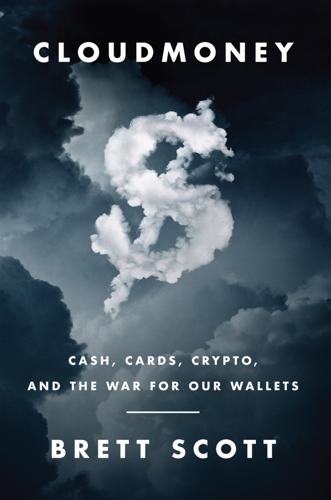
Cloudmoney: Cash, Cards, Crypto, and the War for Our Wallets
by
Brett Scott
Published 4 Jul 2022
If it sometimes feels as though dystopian science fiction has inspired technology companies, it is because we already see its plot lines manifesting in real-world innovations brought to us by Big Tech: from Minority Report’s ubiquitous facial-recognition technology and Blade Runner’s biotechnology through to Snow Crash’s ‘Gargoyles’ – individuals rigged up with devices that feed audio-visual data into a virtual reality version of the Internet called the ‘Metaverse’. But nobody needs to be ‘inspired’ by science fiction for its plot lines to play out: cyberpunk was simply extrapolating from trends that were already inherent within large-scale capitalist systems, which is why the results continue to turn up in our present, as if governed by inertia.
…
Morgan, 8, 96, 150, 156, 227, 232 Jamaica, 42 Japan, 18, 35, 135, 215, 248 Johannesburg, South Africa, 129 Johnson, Alexander Boris, 38 Kazakhstan, 11, 227–9, 233, 247 Keep Cash UK, 262 Kelly, Kevin, 12 Kentridge, William, 144 Kenya, 47, 75, 129, 130–31, 169, 178, 179 Kerouac, Jack, 173, 175 Keynesianism, 80 ‘Kindness is Cashless’, 40 Kiva, 238 Kowloon Walled City, Hong Kong, 216, 219, 220, 226 Kuala Lumpur, Malaysia, 60, 74 Kurzweil, Ray, 153, 252–3 Kyoto, Japan, 135 La Guardia Airport, New York, 128 learning methodology, 163–4 left-wing politics, 7, 184, 191, 211–12, 215 Lehman Brothers, 17–18 Lenddo, 169 Level 39, Canary Wharf, 17, 20, 27, 41, 143 Leviathan (Hobbes), 177 leviathans, 177–84, 215–16 libertarianism, 7, 14, 42, 155, 156, 184 cryptocurrency and, 191, 212, 215–16, 225–6 Libra, 236–41, 245 Litecoin, 218 Lloyds, 72–3, 144, 146 loans, 70–71, 107, 159 artificial intelligence and, 167–8, 172 London, England, 128, 247, 248 Brixton Market, 177 Camberwell, 128 Canary Wharf, 17–18, 20, 41, 62, 211 City of London, 6, 135 Mayor’s Fund, 38 Somali diaspora, 116, 179 Stock Exchange, 24 Underground, 11, 37–8, 86, 87 longevity derivatives, 160 Lonsdale, Joe, 155 Lord of the Rings, The (Tolkien), 19, 155 Los Angeles, California, 101 Luther, Martin, 212 M-Pesa, 79, 109 machine-learning systems, 163–4 Macon, USS, 153 Mafia, 163 Main Incubator, 143 Malaysia, 7, 45, 60, 74 Malick, Badal, 127–8 malware, 32 manifest destiny, 212 ‘Manifesto for Cashlessness’ (Emili), 37 Maputo, Mozambique, 96 Marcus, David, 237, 241 Maréchal, Nathalie, 113 marijuana industry, 101–3 market price, 29, 171 markets, 65, 124–6, 176–80 choice and, 124–6 giant parable, 54 informal, 176–9 oligopolies and, 124–5 payments companies and, 29, 30, 31, 32–3 Marxism, 155, 262 Massachusetts, United States, 46 Massachusetts Institute of Technology (MIT), 7 Mastercard, 30, 37, 39, 77, 91 automatic payments, 149 data, 109, 111 financial inclusion and, 131–2 Wikileaks blockade, 116 Masters, Blythe, 232 Matrix, The (1999 film), 226 Mayfair, London, 6 McDonald’s, 145, 153 Medici family, 135 Melanesia, 255–6 Mercy Corps, 131, 132 Mexico, 42 Microsoft, 7 Azure cloud, 233 Word, 32, 156 middle class, 86, 128, 129 Mighty Ducks, The (1992 film), 234 Military Spouse, 153 millennials, 86, 140 Minority Report (2002 film), 10 mis-categorisations, 167 mist, 30–33 MIT Media Lab, 7 Modi, Narendra, 43, 93 Moffett airfield, California, 153 Monetarism, 80 money creation, 59–63, 67–72, 202 Money Heist (2017 series), 61 money laundering, 42, 116 money users vs. issuers, 50–52 money-passers, 30, 32–3 Monzo, 113, 142 Moon Express Inc., 153 mortgages, 26–7, 94 motor cortex, 248 Mountain View, Silicon Valley, 153 Moynihan, Brian, 38 Mr Robot, 184 Mubarak, Hosni, 116 Mugabe, Robert, 239–41 Mumbai, India, 96 Musk, Elon, 15, 212, 257 mutual credit systems, 259–60 N26, 142 Nairobi, Kenya, 129, 179 Nakamoto, Satoshi, 13, 184–5, 187, 191, 204 NASDAQ, 157, 233 National Aeronautics and Space Administration (NASA), 153 National Arts Festival, 144 National Retail Federation, 86 National Security Agency (NSA), 112, 155 Nationwide, 145–6 Natural Language Processing (NLP), 146 natural market order, 192 Nazarbayev, Nursultan, 227 Neener Analytics, 169 neo-Nazism, 226 nervous system, 20–22, 57, 80, 81, 240, 247–8, 251–2 Nestlé, 24, 28 Netflix, 61 Netherlands, 48, 49, 128–9 Nets Union Clearing Corp, 115 Network Computing, 78 New Age spiritualism, 7, 14, 193, 226 New Jersey, United States, 46 New Scientist, 137 New World Order, 261 New York City, New York, 18, 91–2, 128, 248 La Guardia Airport, 128 Wall Street, 6, 178–9 Nigeria, 43 No Cash Day, 37 no-file clients, 169 Nobel Prize, 93 nomadism, 228 non-seepage, 73 Norway, 35 nudging, 39, 93, 114 Nur-Sultan, Kazakhstan, 11, 227–9 O’Gieblyn, Meghan, 154 Oakdale, California, 101 Occupy movement (2011–12), 211, 215 Office of National Statistics, 83 oil industry, 6, 22–4 oligopolies, 2, 12, 15, 89, 124–5, 142, 151, 180–83, 191 cryptocurrencies and, 229–33, 246 On the Road (Kerouac), 173, 175 OpenBazaar, 229 OpenOil, 24 operating system, 141–2 Oracle, 109 Oxford English Dictionary, 144 Pakistan, 61 Palantir, 155, 157, 226 Panama Papers leak (2016), 81 panopticon effect, 118–19, 172 Papua New Guinea, 191 passive process, 125–6 PATRIOT Act (2001), 111, 179 payments companies, 30, 32–3, 39–41, 77–8, 79 automatic payments, 149 data, 108–9 interpellation, 86–7 plug-ins, 79, 115, 141–2 PayPal, 50, 79, 109, 155, 226, 233–7, 243 New Money campaign (2016), 86–7 Wikileaks blockade, 116 Payter, 31–2 Paytm, 44, 79, 150 Peercoin, 218 Penny for London, 37–8 pension funds, 7, 23 People’s Bank of China, 79, 242 periphery, 28, 248 Peru, 129–30, 176 Peter Diamandis, 153 Philadelphia, Pennsylvania, 41, 133 Pierce, Brock, 234 Piercy, Marge, 150 Pisac, Peru, 129 point-of-sales devices, 40, 77, 130 points of presence, 148 poker games, 91 Poland, 37, 91 police, trust in, 93 Politics of Bitcoin, The (Golumbia), 225 posture, 49 pre-capitalist societies, 55, 215, 251 Premier League, 231 primary system, 50–64 Privacy International, 168 privacy, 2, 43, 44, 46, 47, 104–19 private blockchains, 229, 231 Prohibition (1920–33), 102 promises, 50, 52, 58–9, 61, 70–72, 205–6, 259–60 casino chips, 68–9 deposits as, 69 digital money, 70–72 giant parable, 52–6, 63–4, 188 loans, 70–71, 107, 159 mutual credit systems, 259–60 Promontory Financial Group, 38 Protestantism, 212, 255 psilocybin, 226 psychometric testing, 169 pub quizzes, 91 Pucallpa, Peru, 130, 176, 249 Puerto Rico, 234 Quakers, 135 Quechuan people, 129 Quorum, 232 R3, 233 RAND Corporation, 105 re-localisation, 259 re-skinning, 16, 135–51, 171, 175 Red Crescent, 131 refugees, 131–2 Reinventing Money conference (2016), 31 remittances, 105, 116 Revolut, 140, 142 right-wing politics, 7, 14, 184, 191–3, 211–12, 215, 225–6, 261 rippling credit, 260 risk-adjusted profit, 94 Robert Koch Institute, 34 robotics, 11 Rogoff, Kenneth, 47, 92–3 rolling blackouts, 247 Roman Empire (27 BCE–395 CE), 55–6 Romeo and Juliet (Shakespeare), 29, 30, 32 Rowe, Paulette, 38 Royal Bank of Canada, 158 Royal Bank of Scotland, 62 Russia, 6, 42, 48, 140, 227 Samsung, 11 San Francisco, California, 35, 46, 119, 133, 179, 247 Sān people, 4 Santander, 38 Sardex system, 259 Satoshi’s Vision Conference, 215 Save the Children, 131 savers, 25 Scott, James, 228 seasteading, 156, 216 secondary system, 50, 63–4 self-service, 145–6 SEPA, 80 September 11 attacks (2001), 111 Serbia, 7 sex workers, 96 Shakespeare, William, 29 Shanghai, China, 18, 115, 248 Shazam, 180 Sherlock Holmes series (Doyle), 114, 162, 165, 166 Shiba Inu, 13 Shipibo-Conibo people, 130 Sikoba, 260 Silicon Valley, 7, 9, 139–41, 148, 153, 180, 221 Libra, 237 Singularity, 154–6, 252–3 Silk Road, 227, 229 Singapore, 11, 18, 168, 248 Singularity, 153–6, 226, 252, 252–3 Singularity University, 153–6, 252–3 six degrees of separation theory, 260 skyscrapers, 17–20, 27, 253 slow-boiling frogs, 104 smart cities, 11, 180 smart contracts, 220–24, 258 smart homes, 180 smartphones, 4, 28 financial inclusion and, 95 posture and, 49 Smith, Adam, 251 smoking, 181 Snow Crash (Stephenson), 10 social class, 91–9, 113, 128, 129, 155, 167 Somalia, 116, 179 South Africa, 3–4, 11, 28, 55, 62, 128, 175–6 apartheid, 95 hut tax, 55 National Arts Festival, 144 rolling blackouts, 247 syncretism in, 175–6 South Sudan, 105 Spiegel, Der, 112 Spotify, 166 spread-betting companies, 26 stablecoins, 233–41, 245–6, 255 Standard Bank, 95, 144 states, 42–5, 50–64, 176–85, 215 anti-statism, 42, 184, 215–16 base money, 69 centralisation of power, 15, 180–83 cryptocurrency and, 215 data surveillance, 110–12, 114–15, 155, 168 digital currencies, 242–5 expansion and contraction, 57–8 giant parable, 52–6, 63–4 markets and, 176–80 money issuance, 58–9 primary system, 50, 51, 63 Stockholm syndrome, 121, 131 sub-currencies, 72–3 sub-prime mortgages, 26–7, 94 subsidiary companies, 24, 26–7 Sufism, 91 suits, 124 Sunset Boulevard, Los Angeles, 101 Super Bowl, 8, 261 super-system, 3 supply, 29 surveillance, 2, 7, 8, 10, 15, 33, 39, 42, 72, 104–19, 153–72, 180, 250 artificial intelligence and, 153–72 banking sector and, 108–9 Big Brother, 113–15 CBDCs and, 244, 245 panopticon effect, 118–19, 172 payments censorship, 116–18 predictive systems, 105 states and, 110–12, 114–15, 168 Suspicious Activity Reports (SARs), 111 Sweden, 35, 43, 48, 84, 121 Sweetgreen, 91, 93 SWIFT, 32, 75–6, 80, 108, 112 Switzerland, 35, 108 Symbiosis Gathering, 101 syncing, 195–7, 200–202, 231 syncretism, 175–6 systems failures, 32, 34, 48 Szabo, Nick, 220 Taiwan, 234, 235 Tala, 169 taxation, 55, 57, 110 evasion, 42, 43, 45, 46 TechCrunch Disrupt, 130 Tencent, 2, 7, 114, 178 terrorism, 42, 48, 112, 127 Tether, 234–5, 241 Thaler, Richard, 93 Thatcher, Margaret, 193 Thiel, Peter, 155, 226 thin-file clients, 169 timelines, 197–200 Times of India, 44 tobacco, 181 Tokyo, Japan, 18, 215, 248 Tracfin, 112 transfers, 74–8 transhumanism, 180 Transport for London, 11, 37–8, 86, 87 Transylvania, 65 Trustlines, 260 Twitter, 167, 198 Uber, 2, 149, 177, 179, 237 Uganda, 168 unbanked, 35, 94, 181, 238 underdog, support for, 106 Unilever, 99, 131 United Kingdom American Revolutionary War (1775–83), 60 banking oligopoly, 230 Canary Wharf, 17–18, 20, 41, 62, 211 cash use in, 249 City of London, 6, 135 colonialism, 55, 97, 175–6, 178, 239 digital money system in, 72 GCHQ, 112 HMRC, 110 Premier League, 231 Royal Mint, 60 Somali diaspora, 116, 179 Taylor Review (2016–17), 110 Transport for London, 11, 37–8, 86, 87 United Nations, 14 blockchain research, 222 Capital Development Fund, 37 World Food Programme, 132 United States cash use in, 41, 46, 133 CBDCs and, 244–5, 254 Central Intelligence Agency (CIA), 155 China, relations with, 74–5, 245, 255 data surveillance, 111–12, 155 dollar system, 80, 182, 210, 233–6, 239, 240 Federal Bureau of Investigation (FBI), 111, 155 Federal Reserve, 32, 35, 36, 234 Financial Crimes Enforcement Network, 111 hurricanes in, 36 leviathan complex, 178 marijuana industry, 101–3 NASA, 153 National Security Agency (NSA), 112, 155 Occupy movement (2011–12), 211, 215 PATRIOT Act (2001), 111, 179 Prohibition (1920–33), 102 Revolutionary War (1775–83), 60 Senate, 105–6 September 11 attacks (2001), 111 Singularity University, 153–6 Super Bowl, 8, 261 Wall Street, 6, 178–9 Uruguay, 42 USAID, 45, 127, 178, 179, 245 vending machines, 31–2, 220 Venmo, 79, 243 Ver, Roger, 212, 214, 215 Vienna, Austria, 7 virtual reality, 10 Visa, 15, 30, 31, 37, 39, 40, 41, 44, 77, 80, 127, 174, 255 automatic payments, 149 data, 108, 109, 111, 112 plug-ins, 142 USAID and, 128, 178, 245 Wikileaks blockade, 116 VisaNet, 77 Wall Street, New York City, 6, 178–9 Occupy movement (2011–12), 211, 215 Wall Street (1987 film), 8 Wall Street Journal, 133 Warner, Malcolm, 106 WarOnCash, 37 Weber, Max, 179 WeChat, 79, 109, 114–15, 150 welfare, 43, 113, 118 Wells Fargo, 109, 234, 235 WhatsApp, 75, 198, 237–8, 244, 255 Wikileaks, 116, 183 Wilson, Cody, 216 Winton Motor Carriage Company, 87, 90 Wired, 12 World Economic Forum, 11 World Food Programme, 132 World Health Organisation (WHO), 34 World of Warcraft (2004 game), 234 Xhosa people, 175–6 YouTube, 163, 166, 167, 170 Zambia, 131 Zimbabwe, 11, 239–41, 245 Zuckerberg, Mark, 241 About the Author BRETT SCOTT is an economic anthropologist, financial activist, and former broker.

Tools of Titans: The Tactics, Routines, and Habits of Billionaires, Icons, and World-Class Performers
by
Timothy Ferriss
Published 6 Dec 2016
Chris was my go-to scientist for the “Scientist” section of The 4-Hour Chef, and several of his recipes led me to a live cooking demo with Jimmy Fallon. Chris is good friends with science-fiction writer Neal Stephenson, who’s penned several of my all-time favorites, including Snow Crash and Cryptonomicon. Many guests in this book recommend both Snow Crash and The Diamond Age (Seth Godin, page 237, and Kelly Starrett, page 122). Every year, Chris and Neal have the Annual Loudness Fest in Neal’s backyard, where they build outrageous machines and cooking contraptions: “It wasn’t a big deal that we dug a 6' x 6' x 6'-deep pit in his backyard and turned it into a Jacuzzi to sous-vide cook a 300-pound pig,” Chris says.
…
Harris), Tinker, Tailor, Soldier, Spy; Little Drummer’s Girl; The Russia House; The Spy Who Came in from the Cold (John le Carré), The Big Short: Inside the Doomsday Machine (Michael Lewis), The Checklist Manifesto (Atul Gawande), all of Lee Child’s books Godin, Seth: Makers; Little Brother (Cory Doctorow), Understanding Comics (Scott McCloud), Snow Crash; The Diamond Age (Neal Stephenson), Dune (Frank Herbert), Pattern Recognition (William Gibson) AUDIOBOOKS: The Recorded Works (Pema Chödrön), Debt (David Graeber), Just Kids (Patti Smith), The Art of Possibility (Rosamund Stone Zander and Benjamin Zander), Zig Ziglar’s Secrets of Closing the Sale (Zig Ziglar), The War of Art (Steven Pressfield) Goldberg, Evan: Love You Forever (Robert Munsch), Watchmen; V for Vendetta (Alan Moore), Preacher (Garth Ennis), The Hitchhiker’s Guide to the Galaxy (Douglas Adams), The Little Prince (Antoine de Saint-Exupéry) Goodman, Marc: One Police Plaza (William Caunitz), The 4-Hour Workweek (Tim Ferriss), The Singularity Is Near (Ray Kurzweil), Superintelligence: Paths, Dangers, Strategies (Nick Bostrom) Hamilton, Laird: The Bible, Natural Born Heroes (Christopher McDougall), Lord of the Rings (J.R.R.
…
Predator (Michael Robbins), The Best American Poetry (David Lehman), the works of poets Aimee Nezhukumatathil and Stuart Dischell Randall, Lisa: I Capture the Castle (Dodie Smith) Ravikant, Naval: Total Freedom: The Essential Krishnamurti (Jiddu Krishnamurti), Sapiens (Yuval Noah Harari), Snow Crash (Neal Stephenson), Poor Charlie’s Almanac: The Wit and Wisdom of Charles T. Munger (Charles T. Munger), Siddhartha (Hermann Hesse), The Rational Optimist (Matt Ridley), V for Vendetta (Alan Moore), Labyrinths (Jorge Luis Borges), Meditations (Marcus Aurelius), The Book of Life: Daily Meditations with Krishnamurti (Jiddu Krishnamurti), Illusions (Richard Bach), Striking Thoughts (Bruce Lee), Influence (Robert Cialdini), Surely You’re Joking, Mr.

Beyond: Our Future in Space
by
Chris Impey
Published 12 Apr 2015
Like SpaceX, Blue Origin will use a vertical takeoff and landing (VTOL) rocket that’s fully reusable. After being named valedictorian of his high school class, the eighteen-year-old Bezos said he wanted “to build space hotels, amusement parks, and colonies for two or three million people who would be in orbit.”7 Neal Stephenson, the author of Snow Crash and other science fiction novels, worked part-time for Blue Origin for several years. Meanwhile, NASA isn’t simply giving up and passing the baton. It’s like an older brother with achievements under his belt who suddenly has a set of young, talented, and rambunctious siblings. NASA has been outsourcing much of its cargo-carrying business,8 but it has ambitious plans that bump up against the limitations of the budget.
…
Mex., 239 Los Angeles Times, 71 Losing My Virginity (Branson), 86, 87 Louis IX, king of France, 23 Louis XVI, king of France, 68 Lovelock, James, 286 Lowell, Percival, 163–64 Lucian of Samosata, 20 Lucretius, 18–19 Luna program, 50–51 Lunar and Planetary Laboratory, 156 Lunokhod rover, 143 Lynx rocket plane, 101 M5 fiber, 161 McAuliffe, Christa, 55, 74 Mack 3 Blackbird, 69 McKay, Chris, 173 McLellan, William, 283 magnetic implants, 207 magnetic resonance imaging (MRI), 190 magnetic sails, 186, 223 magnitude of time, 248–50, 249 Manhattan Project, 36, 221 Manifest Destiny, applied to space, 146–47, 199 Manned Habitat Unit, 169 many worlds concept, 17–20, 17, 49, 267 Mao Zedong, 141 Marconi, Guglielmo, 237 Mariner 2, 51 Mariner 4, 164 Marino, Lori, 190 Marriott hotels, 145 Mars, 28, 237, 270 challenges of travel to, 166–70 distance from Earth to, 50, 148, 166 Earth compared to, 171–72, 216 establishing a colony on, 166–71, 169, 192, 195, 200–201, 203, 214, 248 evidence of water on, 124–25, 163–66, 165, 173 fly-bys of, 51, 170 imaginative perceptions of, 163–65 latency on, 178 map of, 163 obstacles to exploration of, 66–67, 148 one-way journey to, 166, 170–71, 200 as potentially habitable, 124–25, 163, 165–66, 171, 172–74, 234, 278 privately funded missions to, 170–71 probes to, 40, 51, 52, 164–65, 176, 246 projected exploration of, 94–98, 101, 104, 115, 119, 157, 161, 163–74, 178, 181, 182 property rights on, 145, 198–99 sex and reproduction on, 200 simulated journey to, 169–70 soil of, 170 staging points for, 161 terraforming of, 172–74, 182, 216, 227 tests for life on, 52 Mars Direct, 169 Mars500 mission, 169 Mars One, 170–71, 198–201 Mars Society, 166 Mars 3 lander, 51 Masai people, 120 Massachusetts General Hospital, 250 Masson-Zwaan, Tanja, 199 mathematics, 19 as universal language, 236–37 Matrix, The, 260 matter, manipulation of, 258 matter-antimatter annihilation, 220, 220, 221–22 Mavroidis, Constantinos, 182 Max-Q (maximum aerodynamic stress), 46 Maxwell, James Clerk, 183 Mayor, Michel, 126–28, 133 medicine: challenges and innovation in, 92–93, 263 cyborgs in, 205 medicine (continued) as lacking in space, 200 in life extension, 259 nanotechnology in, 225, 259 robots in, 180, 181, 182, 205 mediocrity, principle of, 261 Mendez, Abel, 278 mental models, 13–17, 18–19 Mercury: orbit of, 126, 215 property rights on, 145 as uninhabitable, 124 mercury poisoning, 118 Mercury program, 41, 42, 71, 74, 272 meta-intelligence, 94 meteorites, 152, 160, 160, 164, 195 methane, 52–53, 125, 132, 278 as biomarker, 217–18 methanogens, 217 “Method of Reaching Extreme Altitudes, A” (Goddard), 30, 31 Methuselah, 131 mice, in scientific research, 48–49, 250–51 microbes, microbial life, 97–98, 173, 174, 217, 241, 246, 286 habitable environments for, 122–25, 165–66, 186 microcephaly, 203 microgravity, 115 microsatellites, 90 Microsoft, 84, 188 microwaves: beaming of, 223–24 signals, 187 Microwave Sciences, 223 Middle East, population dispersion into, 8, 118 migration: early human population dispersion through, 5–9, 9, 15, 19 motivation for, 9–12, 11 military: covert projects of, 69–72 Eisenhower’s caveat about, 79 in Internet development, 77, 78–79 nanotechnology in, 180–81, 225 in rocket development, 30, 32–39, 55–56, 71 in space programs, 73, 76, 79, 144, 153 Milky Way galaxy, 227, 240, 253, 263, 270 ancient Greek concept of, 18 Drake equation for detectable life in, 188, 233–35 Earth-like exoplanets in, 129–33, 233, 291 formation and age of, 235 size of, 242 Millis, Marc, 290 mind control, 245 mind uploading, 259 miniaturization, see nanotechnology minimum viable population, 201, 251 mining: of asteroids, 155–56, 182, 214 of Enceladus, 227 on Moon, 214 by robots, 178, 182 Minsky, Marvin, 177, 179 MirCorp, 75 mirrors, 173 Mir Space Station, 75, 115, 167–68 Miss Baker (monkey), 47–48, 48 Mission Control, 43, 100, 158, 269 MIT, 38, 77, 90, 141, 226, 257 mitochondrial DNA, 6, 9 Mittelwerk factory, 33, 35 Mojave Desert, 71, 82, 83 population adaptation to heat in, 118–19 molecules, in nanotechnology, 151 Mongols, 23, 24 monkeys, in space research, 47–48, 48 Montgolfier brothers, 68 Moon: age of, 50 ancient Greek concept of, 18 in asteroid capture, 156 distance from Earth to, 49–50, 150, 166, 267 first animals on, 49 first man on, 71, 158 latency on, 178 lunar base proposed for, 157–63, 158, 160, 195, 214, 248 manned landings on, 44–45, 49–50, 54, 56, 63, 71, 84, 99, 104, 108, 143, 157, 158, 176, 219, 270, 272 obstacles to exploration of, 66 orbit of, 25 probes to, 40, 51, 129, 140, 143 projected missions to, 92, 143, 157–63, 166, 214, 275 property rights on, 145–47, 198–99 proposed commercial flights to, 102 in science fiction, 20, 26 soil of, 159, 160, 162 as staging point for Mars, 161 staging points for, 148 telescopic views of, 31, 49–50 as uninhabitable, 124, 166 US commitment to reach, 41–45 Moon Treaty (1979), 146 Moon Treaty, UN (1984), 279 Moore, John, 203 Moravec, 259–60 Morgan, Barbara, 74 Morrison, Philip, 187, 239 Mosaic web browser, 79 Moses, 148 motion, Newton’s laws of, 25, 67–68 multistage rockets, 29 multiverse, 252–57, 255 Musk, Elon, 94–98, 97, 100–101, 112–13, 148, 205 mutation, 6–7 cosmic rays and, 204 7R, 10–12, 11, 15 mutually assured destruction, 42 Mylar, 184, 225 N1/L3 rocket, 44, 54 nanobots, 179–82, 181, 224–28 NanoSail-D, 184, 185 nanosponges, 180 nanotechnology, 151–52, 179–82, 208, 214, 245, 280, 283 projected future of, 257–59 see also nanobots National Aeronautics and Space Administration (NASA), 83, 90, 96, 97–98, 114, 116–17, 128, 144, 153, 156, 176, 178, 182, 184–85, 185, 195, 200, 205, 206, 216, 224, 226, 271, 275, 280, 290 and Air Force, 71 artistic depiction of space colonies by, 196, 196 budget of, 39, 42, 43, 49, 54, 64, 75, 99, 104, 140, 144, 158, 166, 188, 238, 270, 272, 284 cut back of, 45, 49, 54, 188 formation of, 38–39, 145, 269 private and commercial collaboration with, 99–102, 104 revival of, 103–5 space program of, 51, 55–56, 71–76, 92, 157–58, 285–86 stagnation of, 63–67, 141, 147, 166 National Geographic Society, 7, 265 National Radio Astronomy Observatory, 187–88 National Science Foundation (NSF), 78–79 Native Americans, 118 naturalness, 256 natural selection, 6, 16, 123, 164, 251, 291 Nature, 187 Naval Research lab, 37 Navy, US: Bureau of Aeronautics, 30 in rocket development, 36–37 Nayr, Ernst, 238 Nazis, 48 Propaganda Ministry of, 32 von Braun and, 32–34, 141, 269 NBC, 75 Nedelin, Mitrofan, 43 “needle in a haystack” problem, 188–89, 242–43 “Nell” (rocket), 29 Neptune, 127, 131, 225 as uninhabitable, 125 Nergal, 163 Netscape, 80 New Mexico, 88, 88, 105 Newton, Isaac, 24–25, 25, 30, 67–68, 110, 262, 267 New York Times, 30, 94 Nicholas, Henry, 214 Niven, Larry, 198, 253 Nixon, Richard, 108, 167 Nobel Prize, 126, 180, 214 nomad planets, 128 Noonan, James, 266 nuclear fission, 220, 220, 221 nuclear fusion, 110, 161–62, 220, 221, 221, 222 nuclear reactors, 224 nuclear weapons, 36, 42, 78, 129, 146, 197–98, 222, 234–35, 244, 245, 246, 286 Nuremberg Chronicles, 17 Nyberg, Karen, 200 Obama, Barack, 104 Oberth, Hermann, 28, 31–32, 36, 268 oceans: acidification of, 195 sealed ecosystem proposed for, 197 Oculus Rift, 176 Ohio, astronauts from, 74 Okuda, Michael, 228 Olsen, Ken, 213 100 Year Starship project, 224 100 Year Starship Symposium, 229 101955 Bennu (asteroid), 156 O’Neill, Gerard, 196, 251–52 Opportunity rover, 165 optical SETI, 190, 243 Orbital Sciences Corporation, 100–101, 275 orbits: concept of, 25 geostationary, 149–50, 150 legislation on, 146 low Earth, 49, 54, 63, 70–71, 70, 74–75, 97, 100, 110, 113–14, 151, 155, 184 manned, 40–41, 141–42 staging points from, 148 orcas, 190 Orion spacecraft, 104 Orteig, Raymond, 90 Orteig Prize, 90–91 Orwell, George, 35 OSIRIS-REx, 156 Outer Space Treaty (1967), 145–47, 198–99 “Out of the Cradle, Endlessly Rocking” (Clarke), 201 oxygen, 156, 159, 161, 170, 172, 173–74, 182, 193–95, 214 Oymyakon, Siberia, population adaptation to cold in, 119–20 ozone, as biomarker, 217 Pacific Ocean, 9, 224 Pac-Man, 175 Page, Larry, 92 Paine, Thomas, 167 Pale Blue Dot (Sagan), 121 “Pale Blue Dot,” Earth as, 53, 118–22, 121, 130 Paperclip, Operation, 141 parabolic flight, 93 paradox, as term, 241 Paratrechina longicornis (crazy ant), 193 Parkinson’s disease, 202–3 particle physics, standard model of, 256 Pascal, Blaise, 120 Pauley, Phil, 196–97 PayPal, 95, 97 Pensées (Pascal), 120 People’s Daily, 162 People’s Liberation Army, 144 Pericles, 18 Pettit, Don, 100, 273 phenotype, 6 philanthropy, 95 PhoneSat, 185 photons, 183, 186 in teleportation, 229, 230, 231 photosynthesis, as biomarker, 217 pigs, 250 Pinker, Steven, 16 Pioneer probes, 50, 51–52 piracy, 24 Pitcairn Island, 202 planetary engineering, 172 Planetary Resources, 156 planetary science, 51–52, 176 Planetary Society, 184 planets: exploration of, 49–53 formation of, 156 plate techtonics, 132, 241 play, imagination in, 10, 14 pluralism, 17–20, 17, 49 plutonium, 66 poetry, space, 272–73 politics, space exploration and, 63–64, 104, 141, 214, 238 Polyakov, Valeri, 115, 167–68 population bottleneck, 201–2, 287 Poynter, Jane, 193 Princess of Mars, A (Burroughs), 164 Principia (Newton), 25 Project Orion, 221, 221 Project Ozma, 187–88, 237, 253 prokaryotes, 172 property rights, in space, 145–47, 198 Proton rockets, 65, 113 proton scoop, 222–23 Proxmire, William, 238 Puerto Rico, 239, 243 pulsar, 131 Pythagorean Theorem, 238 Qian Xuesen, 141 Qi Jiguang, 24 Qualcomm Tricorder X Prize, 92 quantum entanglement, 230–32, 230 quantum genesis, 255 quantum mechanics, 258 quantum teleportation, 230–32, 230 quantum theory, 189 qubits, 230 Queloz, Didier, 126–28, 133 R-7 rocket, 37 R-16 rocket, 43 radiation, infrared, 109, 253–54, 254 radioactivity, as energy source, 124, 181 radio waves, 66, 187, 189, 242 ramjets, 222–23 RAND Corporation, 222 Rare Earth hypothesis, 241 RCS Energia, 106 RD-180 engine, 72 Reagan, Ronald, administration of, 167, 271 reality TV, 75, 171, 214, 282 “Realm of Fear,” 229 reasoning, human capacity for, 13–17, 18–19 red dwarfs, 131 Red Mars (Stanley), 174 Red Scare, 141 Redstone rocket, 36–37, 71 reindeer, 119–20 remote sensing, 175–91, 224 RepRap Project, 227 reproduction, sexual, 6, 172 Ride, Sally, 74 “Right Stuff,” as term, 71, 114 Right Stuff, The (Wolfe), 272 Ringworld series (Niven), 253 risk: as basic to human nature, 9, 262 genetic factor in, 10–12 of living on Mars, 167–70 in pushing human limits, 120 of space tourism, 102, 105–9, 155 of space travel, 42–43, 55–56, 56, 106–9, 152–53 Robinson, Kim Stanley, 174 robonaut project, 179 robots, robotics: as aids to humans, 249, 250 in asteroid redirection, 104 commercial, 178 ethical issues of, 179 nanotechnology in, 179–82, 181 remote control of, 177–78 remote sensing through, 176 self-assembly and self-replication by, 226–28, 258, 259 in spacecraft, 50, 100, 100 space exploration by, 53–57, 66, 98, 133, 161, 177–79, 179, 208, 224–28 see also cyborgs; nanobots Rocketdyne, 112 rocket equation, 27, 53, 72–73, 110–11, 111, 148, 220, 268 rocket fuel, 110–13, 148, 156, 159, 161 comparison of efficiency of, 219–24 Rocket Performance Calculator, 222 rockets: alternatives to, 148–53 “bible” of, 267 challenges in launching of, 43–44, 46–49, 106, 107, 111–12, 148 comparison of US and Soviet, 44 cost of, 112–13, 113 developing technology of, 21–39, 43, 101, 103, 112–13, 183, 262 fuel for, 110–13, 148, 156, 159, 161, 220–21 launched from planes, 84 liquid-fueled, 28–29, 29 physics and function of, 110–14 proposed energy technologies for, 220–24 reusable, 101, 103, 111, 112, 113 solar sails compared to, 183 as term, 23 visionaries in development of, 26–30, 94 in warfare, 22–24, 30, 32–34 see also specific rockets “Rockets to the Planets in Space, The” (Oberth), 28 Rogers Commission, 271 Rohrabacher, Dana, 284 Rome, ancient, 18, 67, 163 Rovekamp, Roger, 207 rovers, 66–67, 92, 125, 140, 143, 158, 165, 167 nanotechnology in, 181–82 remote sensing through, 176 Rozier, Jean-François de, 68 RP-1 kerosine, 110 RS-25 rocket, 112 Russia, 23, 26–27, 149, 178 space program of, 37, 65–66, 72, 75, 84, 91, 104, 106, 107–8, 113, 114, 140, 143, 168, 184, 195, 200, 271 space tourism by, 75, 102 tensions between US and, 72 see also Soviet Union Russian Revolution, 27, 47 Russian Space Agency, 102 Rutan, Burt, 72, 82–86, 85, 88, 88, 89, 91, 97–98, 105–6, 214 Rutan, Dick, 83–84 Rutan Aircraft Factory, 83 Saberhagen, Fred, 177, 259 Sagan, Carl, 53, 121–22, 121, 176–77, 184, 198, 234–35, 238, 240 Sahakian, Barbara, 98 Sahara Desert, 238 sails: solar, 183–86, 185 wind-driven, 67–68, 183, 262 Salyut space station, 54, 108 satellites: artificial Earth, 36–39, 37, 40, 65, 71, 106 commercial, 96, 105 communications, 101, 142, 153 in energy capture, 253 geostationary, 149 GPS, 144 launching of, 154, 154 miniature, 90, 184–85 Saturn: moon of, 125, 227 probes to, 52–53 as uninhabitable, 125 Saturn V rocket, 43, 44, 46, 54, 83, 104, 111, 113, 113, 166 Scaled Composites, 83, 89 science fiction, 192, 196, 222, 223, 239, 250, 253 aliens in, 186–87 in film, 28, 204 Mars in, 164, 174 roots of, 20 technologies of, 228–32, 259 see also specific authors and works scientific method, 213 Search for Extraterrestrial Intelligence (SETI), 187–90, 234, 239, 254 evolution and technology of, 237–39, 242–43, 242 lack of signals detected by, 236–37, 240–44 new paradigms for, 258 “Searching for Interstellar Communications” (Cocconi and Morrison), 187 sea travel: early human migration through, 8, 9 exploration by, 109, 262 propulsion in, 67–68 self-replication, 226–28, 258, 259 Senate, US, Armed Services Preparedness Committee of, 39 SETI Institute, 188 78–6 (pig), 250 sex: promiscuous, 12 in reproduction, 6, 172 in space, 200, 214 Shackleton Energy Company, 161 Shane, Scott, 98 Shatner, William, 88–89 Shelley, Mary, 206 Shenlong (“Divine Dragon”), 145 Shenzhou 10, 142–43 Shepard, Alan, 41, 84 Shostak, Seth, 243 Siberia, 65, 119–20, 238 population dispersion into, 8, 118, 218 Sidereal Messenger, The (Galileo), 270 Siemienowicz, Kazimierz, 267 Simonyi, Charles, 75 Sims, 175 simulation: infinite regression in, 261 living in, 257–62 simulation hypothesis, 261 Sinatra, Frank, 45 singularity, 207 in origin of cosmos, 255 and simulation, 257–62 technological, 258–59 Singularity University, 94, 259 Skylab space station, 54, 116 Skype video, 176 smart motes, 181, 225 smartphones, 92, 185 Smithsonian Institution, 30, 81 Smithsonian National Air and Space Museum, 85, 91, 271 Snow Crash (Stephenson), 103 Snowden, Edward, 178 social media, 195 Sojourner rover, 165 SolarCity, 96–97 solar flares, 167 solar power, 96, 181, 183–86 solar sails, solar sailing, 183–86, 185, 223, 225, 227 Solar System: discovery of first planet beyond, 126–27 edge of, 50, 53, 121 formation of, 156 habitability potential in, 122, 124–26 latency variations in, 178 probes into, 51–52, 66, 177, 185–86, 208, 270 projected travel within, 248–49, 263 property rights in, 145–47, 198 worlds beyond, 126–29, 156, 208, 215, 250, 263 solar wind, 162, 223 sound barrier, breaking of, 69, 71 South America, 11, 202, 218 Soviet Union, 30, 34, 37, 141 fall of, 47, 65, 75, 197, 271–72 rocket development in, 35–39 space program failures and losses of, 43, 47, 50–51, 54, 269 space program of, 37–39, 40–43, 141, 149, 237, 271 Soyuz spacecraft, 43, 55, 75, 84, 91, 102, 106, 113, 143 crash of, 107–8 space: civilians in, 55, 74 civilian vs. military control of, 37–39, 69–71, 79, 153 commercialization of, 55, 63, 73–76, 79–80, 88–89, 92, 97, 99–109, 100, 110, 147, 153–56, 154, 199, 214, 249, 275 debris in, 144, 152 first American in, 41 first man in, 40–41, 41 first women in, 40, 74 as infinite, 18, 19, 22 as inhospitable to human beings, 53–54, 114–17, 121 legislation on, 39, 78, 90, 144, 145–47, 198–200 living in, 192–208 “living off the land” in, 166, 200 peaceful exploration of, 39 potential for human habitabilty in, 123 prototype for sealed ecosystem in, 192–97 Space Act (1958), 39, 90 Space Adventures, 102, 275 space colonization: challenges of, 197–201 cyborgs in, 204–8 evolutionary diversion in, 201–4 legal issues in, 198–200 of Mars, 166–71, 169, 192, 195, 203 off-Earth human beings in, 215, 250–51 prototype experiments for, 192–97 space elevators, 27, 148–53, 150, 160–61, 185, 280 “Space Exploration via Telepresence,” 178 Spaceflight Society, 28 space hotels, 102–3 Space Launch System (SLS), 104 space mining, 155–56, 161–62 “Space Oddity,” 142 spaceplanes, 71–72, 85, 144 Spaceport America, 1–6, 105 Space Race, 35–39, 37, 40–43, 50, 55, 139 SpaceShipOne, 72, 85, 85, 88–89, 88, 91 SpaceShipTwo, 88, 101, 105 Space Shuttle, 45, 46, 49, 64, 72, 84, 85, 111–13, 112, 159, 167, 194, 219–20, 222, 275 disasters of, 55–56, 56, 74–75, 107, 111–13 final flight of, 271 limitations of, 55–56, 64–65 as reusable vehicle, 54–55 space sickness, 114 spacesuits, 89, 182, 195–96 space-time, 255, 255 manipulation of, 258 space tourism, 63, 73, 75–76, 79–80, 88–89, 91, 101–3, 154, 170, 214 celebrities in, 88, 101–2 revenue from, 154–55, 155 risks of, 102, 105–9, 155 rules for, 105 space travel: beyond Solar System, see interstellar travel bureaucracy of, 105–10, 271 cost of, 39, 42, 45, 49, 54, 55, 66, 75, 81–82, 91, 112–14, 113, 139–49, 153, 155–56, 158–59, 161, 166, 179, 183, 198, 214, 217, 222, 224–26, 252, 270, 275, 284 early attempts at, 21–22, 22 effect of rocket equation in, see rocket equation entrepreneurs of, 81–98 erroneous predictions about, 214 failures and disasters in, 21–22, 22, 38, 43, 47, 50–51, 54–56, 56, 63–64, 68, 72, 74–75, 101, 102, 107, 142, 184, 269, 271, 275 fatality rate of, 107–9 fictional vignettes of, 1–4, 59–62, 135–38, 209–12 Internet compared to, 76–80, 77, 80 life extension for, 250–51 lifetimes lived in, 251 living conditions in, 114–17 new business model for, 99–105 Newton’s theories as basis of, 25 obstacles to, 21, 63, 66–67, 105–109 space travel (continued) as part of simulation, 261–62 public engagement in, 45, 73, 85, 93, 162, 177, 217 remote sensing vs., 175–91 risks of, 43–44, 83, 89, 93, 105–9 speculation on future of, 76–80, 133, 213–32, 248–52 suborbital, 84 telescopic observation vs., 49–50 visionaries of, 26–39, 80, 94, 109 SpaceX, 96, 97, 100–103, 113–14, 275 SpaceX Dragon spacecraft, 96, 100, 100, 102, 170 special theory of relativity, 228, 231 specific impulse, 220 spectroscopy, 127, 165, 176 spectrum analyzer, 237 Speer, Albert, 34 Spielberg, Steven, 238 Spirit of St.
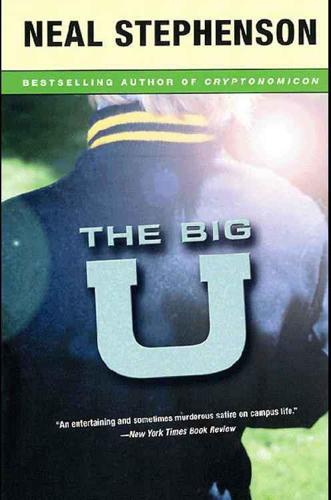
The Big U
by
Neal Stephenson
Published 2 Jan 1984
About the Author Neal Stephenson is the author of Snow Crash, The Diamond Age, Zodiac and Cryptonomicon. Born on Halloween 1959 in Fort Meade, Maryland—home of the National Security Agency—he grew up in Champaign-Urbana, Illinois, and Ames, Iowa, before attending college in Boston. Since 1984 he has lived mostly in the Pacific Northwest and has made a living out of writing novels and the occasional magazine article. Visit www.AuthorTracker.com for exclusive information on your favorite HarperCollins author. Also by Neal Stephenson Cryptonomicon In the Beginning…Was the Command Line The Diamond Age Zodiac Snow Crash Copyright THE BIG U.
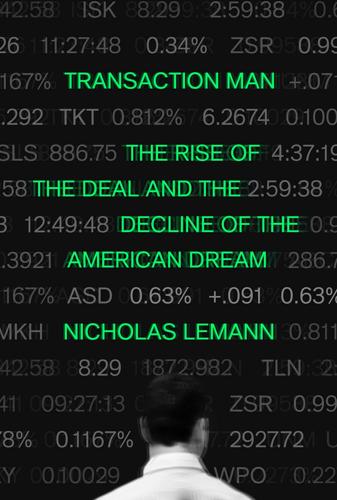
Transaction Man: The Rise of the Deal and the Decline of the American Dream
by
Nicholas Lemann
Published 9 Sep 2019
Through a connection of his mother’s, he found a job at Apple. During that early time back in California, Hoffman and Thiel spent a weekend at Hoffman’s grandparents’ house in Mendocino County, talking about what they were going to do with their lives. Hoffman told Thiel, with great enthusiasm, about a science fiction novel he’d just read, Snow Crash, by Neal Stephenson, which takes place in a twenty-first-century California where government has collapsed and people create avatars and try to find a new way to live through a technology-based virtual society called the Metaverse. This was before the term “Internet” was in general circulation, though the technology for it existed.
…
.; lobbying by; Morgan Stanley and; online networks and, see networks; political vision of; start-up culture of; Transaction Man in; venture capital in; workers’ rights in simulation hypothesis Sinai Health System singularity Sisters of St. Casimir Six Degrees (program) six degrees, as term 60 Minutes Sloan, Alfred P. small businesses: liberal defense of; obsolescence of; as part of corporate ecosystem; see also auto dealers Smith, Adam Smith, Roger Snow Crash (Stephenson) social entrepreneurs socialism; regulation equated with; rejection of social movements SocialNet “Social Responsibility of Business Is to Increase Its Profits, The” (Friedman) Social Security Administration South Korea Southwest Catholic Cluster Project Southwest Organizing Project Soviet Union SpaceX Spark Networks Spencer, Herbert Sperling, Gene Spits, Gonneke Spitzer, Alan Spitzer, Alison Spitzer, Delbert (Del) Spitzer, George Spitzer, John Spitzer, Pat Standard Oil Stanford University; Hoffman at Stanley, Harold Star Citizen Start-Up of You, The (Hoffman) start-ups; buyouts of; see also specific companies State Department steel industry Stefanos, Leo Steffens, Lincoln Stein, Gertrude Stephenson, Neal Stevenson, Adlai stockholders, see shareholders stock market: 1929 crash of; statistical study of; see also investment banking; Jensen, Michael; Morgan Stanley; Securities and Exchange Commission shareholders; stocks stocks: bonds vs.; classes of in Silicon Valley; executives compensated in; new instruments outpacing; online sales of; on margin; see also stock market Story of a Lover, The (Hapgood) “Strength of Weak Ties, The” (Granovetter) Strickland, Ted strikes Strober, Sue Structure of Scientific Revolutions, The (Kuhn) Stuart, Harold subprime auto loans subprime mortgages, see mortgages Subud suburbs suffragists Summers, Lawrence Supreme Court; Brandeis on Sutton, Betty swaps, financial syndicate system; decline of Taft, William Howard Taft-Hartley bill Talman Federal Savings Tamayo Financial Services Tarbell, Ida TaskRabbit Teaching in the Home (Berle) Team Auto Tea Party technology, see computers; Internet; networks; Silicon Valley TED (conference) Temporary National Economic Committee Ten Step Sales Procedure (Spitzer) Tesla Thaler, Richard “Theory of the Firm” (Jensen and Meckling) Thiel, Peter; as provocateur Think and Grow Rich (Hill) Time-Life Tokyo Stock Exchange “too big to fail” doctrine totalitarianism Toyota trading: largest loss in; rise of; see also investment banking; Morgan Stanley Transaction Man; institutional model replaced by; loss of faith in; paradigm applied to social issues; pluralism and; see also financial economics; investment banking; Morgan Stanley Treasury Department; under Paulson; under Rubin passim; under Woodin Treaty of Detroit “Treaty of Detroit, The” (Bell) Troubled Asset Relief Program trucking Truman, David Truman, Harry Trump, Donald trustbusting; GM’s strategy against; of Morgan Stanley; obsolescence of; of tech firms Turner, Frederick Jackson Tversky, Amos 2008 financial crisis; automotive industry during; in Chicago Lawn; credit markets frozen during; government bailouts during; lead-up to, see deregulation; derivatives; mortgages Uber underwriting; by banks; decline of unions; criticism of; government support for; as interest groups; pensions from; Treaty of Detroit by United Auto Workers United Nations United States: core institutions of; corporations unforeseen by founders of; global influence of; national character in United States of America v.
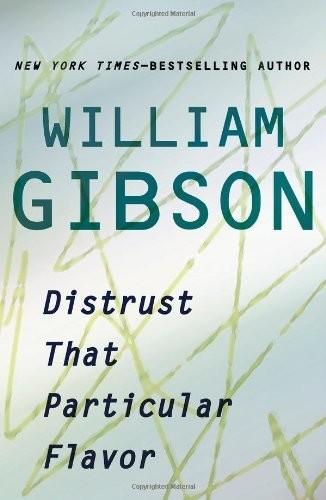
Distrust That Particular Flavor
by
William Gibson
Published 3 Jan 2012
In the coastal city of Longkou, Shandong province, China (just opposite Korea), Singaporean entrepreneurs are preparing to kick off the first of these, erecting improved port facilities and a power plant, as well as hotels, residential buildings, and, yes, shopping centers. The project, to occupy 1.3 square kilometers, reminds me of “Mr. Lee’s Greater Hong Kong” in Neal Stephenson’s Snow Crash, a sovereign nation set up like so many fried-noodle franchises along the feeder routes of edge-city America. But Mr. Lee’s Greater Singapore means very serious business, and the Chinese seem uniformly keen to get a franchise in their neighborhood, and pronto. Ordinarily, confronted with a strange city, I’m inclined to look for the parts that have broken down and fallen apart, revealing the underlying social mechanisms; how the place is really wired beneath the lay of the land as presented by the Chamber of Commerce.

Surveillance Valley: The Rise of the Military-Digital Complex
by
Yasha Levine
Published 6 Feb 2018
Named like the CIA’s secret 1960s “Keyhole” spy satellite program, the company had been launched two years earlier as a spinoff from a video game outfit. Its CEO, John Hanke, hailed from Texas and had worked for a time in the US Embassy in Myanmar. He told journalists that the inspiration for his company came from Neal Stephenson’s Snow Crash, a cult sci-fi novel in which the hero taps into a program created by the “Central Intelligence Corporation” called Planet Earth, a virtual reality construct designed to “keep track of every bit of spatial information that it owns—all the maps, weather data, architectural plans, and satellite surveillance stuff.”95 Life would imitate art.96 Keyhole derived from video game technology but deployed it in the real world, creating a program that stitched satellite images and aerial photographs into seamless three-dimensional computer models of the earth that could be explored as if they were in a virtual reality game world.
…
See Cambridge Project Project Camelot, 67–68, 160 Project ComCom, 66 Project Igloo White, 25–27 propaganda CIA’s Cold War media funding, 232–233 Ithiel de Sola Pool’s research, 65–66 protests anti-Vietnam War protesters, 108 Arab Spring, 247–251 congressional hearings on domestic surveillance, 86 early warning against leftist revolutions, 67 exposé on domestic surveillance, 89–90 spying on American protestors with ARPANET, 73–80 student protests against the Vietnam War and the Cambridge Project, 69–71, 90, 108 targeting the Stanford Research Institute, 105–106 PSINET, 124–126 psychological warfare, 20, 27–33, 65–66, 232–233 punch card technology, 54–55 Pye, Lucian, 65–66 Pyle, Christopher, 35(quote), 76, 79, 84 Quittner, Joshua, 136 race CONUS Intel targeting civil rights activists, 76–78 “dynamations,” 47–48 early racial data tabulation, 55–56 proposed counterinsurgency tactics against African Americans, 30–31 radar systems: early warning against leftist revolutions, 67 radiation exposure, 37 Radio Free Asia, 232–234, 254–255, 258 Radio Free Europe, 232–233 Radio Liberation From Bolshevism (Radio liberty), 232–233 Ramparts magazine, 29–30 Rand, Ayn, 109, 128–129, 239–240 RAND Corporation, 28–29, 32 Redirect Method, 182 regime change, 182, 251 Regional Enforcement Information Network, 81 revolution, technology, 101–106 Rhode, Joy, 66–67 Rich, Nathaniel, 245 Roberts, Lawrence, 59–62 robotics gerbil experiments in project SEEK, 130 MIT cybernetics program, 42–43 surveillance systems in Vietnam, 25 See also cybernetics Rolling Stone magazine, 104–105, 244–245, 250 Ross, Alec, 248–249 Rossetto, Louis, 101–102, 128–129, 131–134, 137–138, 143, 203 routing system protocol design, 93–97 Rowan, Ford, 73–75, 87–90, 97 Russia BBG’s anti-censorship activities and policies, 236–239 Snowden’s escape to, 199, 207 Tor’s Deployment Plan, 253 See also Soviet Union Russian Deployment Plan, 236–239 Russo, Anthony, 32–33 SABRE (Semi-Automated Business-Related Environment), 82 SafeWeb proxy, 235 Sandberg, Sheryl, 153 Sandvik, Runa, 206 satellite technology, 15–18, 94 SATNET, 94 Schmidt, Eric, 173, 181JigSaw181 Schrader, William, 123–124, 126 Science Applications International Corporation (SAIC), 3–4 Scott, Ridley, 115 search engines, 102–103, 148–149, 151 search logs, 153–158 security crypto apps, 258–260 political interests and weaponization of the Internet, 268–269 Signal and other secure apps, 265–266 Silk Road, 260–262 See also Tor/Tor Project Semi-Automatic Ground Environment (SAGE), 41–42, 82 September 11, 2001, 139–141 Sequoia Capital, 151 The Shadow Factory (Bamford), 238 Shepard, Andrea, 216 Shockley, William, 145 Signal app, 210, 257–258, 265–266 Sikorsky H-34 helicopter, 13–14 Silk Road, 201–205, 260–262 Simulmatics Corporation, 65–66 slave labor, 272–274 smartphones, CIA hacking tools targeting, 265–266 Snow Crash (Stephenson), 174 Snowden, Edward background and work experience, 196–199 blowing the whistle on the NSA, 185–187 global NSA spy implants in the Internet backbones, 191–192 government involvement in supporting and cracking Tor, 264–265 history of surveillance, 75 Jacob Appelbaum and, 222 NSA PRISM program, 193–196 political interests and philosophy, 199–201, 269 privacy movement, 259 Signal and Tor endorsement, 258 the Internet as evil entity, 207–208 Tor Project connection to WikiLeaks, 205–211, 252–254 soap operas, 16–17 social media Anonymous movement and the author, 212 Arab Spring protests, 247–251 backing Internet Freedom policies, 234–236 police use to monitor activists, 188–189 predictive policing, 167 sociology: importance of cybernetics, 45 South Vietnam, 13–15 Southeast Asia CIA propaganda projects, 232–233 intelligence and data collection, 52–53 See also Vietnam Soviet Union first nuclear test, 37–38 Pool’s Project ComCom, 66 Sputnik I launch, 15–18 See also Cold War Space and Naval Warfare Systems Command, 247 Space Race: Sputnik I launch, 15–18 SpaceX, 180 Sputnik I launch, 15–18, 41 Stanford Artificial Intelligence Laboratory, 104–107 Stanford Digital Libraries project, 146 Stanford Research Institute Augmentation Research Center, 50–51, 112 Brin and Page, 144–145, 147–149 powering up ARPANET, 61–62 Stewart Brand, 111–112 student protests against ARPA, 69 Stanton, Edwin, 187 State Department, US Google’s involvement with, 182–183 Tor Project funding, 238–239 training global activists in social media use, 249–250 State of the Onion, 220 statistics: Hollerith’s tabulator machine, 54–56 Steele, Shari, 220–221 Stephenson, Neal, 174 Strategic Hamlet initiative, 29 student protest, 8, 62–64 Students for a Democratic Society (SDS), 62–64, 70 Summers, Larry, 153 Sun Microsystems, 151 surveillance technology growth of corporate and government databases, 82–83 military operations in Vietnam, 25–26 Snowden’s views on, 200 Tor’s lack of protection against, 213–214 Syria: Arab Spring, 248 Syverson, Paul, 224–225 tabulation machine, 54–55, 80, 272–273 TCP/IP (Transmission Control Protocol/Internet Protocol), 95–96 Technology, Entertainment, and Design Conference (TED), 131 technology revolution, 101–106 Technospies (Rowan), 90 Telecommunications Act (1996), 127 telecommunications technology cybernetics and, 43–46 defense need for anonymous communication capability, 224–225 early defense communication systems development, 35–37 history of government spying, 187–188 Internet Freedom policies and digital weapons, 234–236 modeling the Soviet internal system, 66 Signal app, 257–258 Telecosm (Gilder), 102 terrorist activities, 140–142, 161–162 Tesla, Nikola, 144 Thailand anthropomorphic survey on Thais, 53–54 psychological warfare research programs, 29–30 Thiel, Peter, 180 “thinking centers,” 58–59 32C3 (Chaos Computer Club), 219–222 This Machine Kills Secrets (Greenberg), 245 Thompson, Hunter S., 75–76 Tor/Tor Project Appelbaum employment, 240–241 as weapon against Internet censorship, 236–239 attacks on the author, 212–213, 215–218 Broadcasting Board backing, 228–230 celebrating their anonymity and secrecy, 209–210 cracking the network, 263 cypherpunks, 203–204 Dread Pirate Roberts and Silk Road, 201–205, 260–262 Edward Snowden’s activities and, 206–211, 252–253 enhancing US government power, 223–224 government hacking and cracking, 263–264 government support for, 213–215 investigation of, 222–223 Jacob Appelbaum and, 221–222 lack of protection against surveillance, 213–214 Open Technology Fund, 256–257 origins and creators, 225–227 Silicon Valley support, 212–213 32C3, 220–221 training Arab Spring protesters in social media use, 249–250 training political activists around the world, 251–253 US Intelligence benefiting from involvement with, 245–247 WikiLeaks and, 242–245 Total Information Awareness (TIA) project, 161–162 tracking individuals, 158–160, 169–173 Tunisia, 248 Tunney, John, 90–93 Uber, 171 Ulbricht, Ross, 260–262 unemployment: results of cybernetics research, 46 United Kingdom, defoliant use and, 14–15 University of California at Los Angeles (UCLA), 61–62, 95–97, 165 University of California at Santa Barbara (UCSB): powering up ARPANET, 61–62 University of Michigan, 69 University of Utah: powering up ARPANET, 61–62 Valentine, Douglas, 31 Valley, George: early warning radar system automation, 38 video games, computerized, 104–106, 148, 169, 174 Viet Minh insurgency, 22 Vietnam American military’s destruction of Asian culture, 32–33 Americans’ declining morale and increasing drug use, 31–32 CIA radio propaganda, 232–233 CONUS Intel targeting protesters, 77–78 Erskine’s reconnaissance, 19–20 Godel’s high-tech counterinsurgency program, 24 Project Agile, 13–15, 24–25 psychological warfare research, 27–31 Student anti-war protests, 69 student protests targeting ARPANET, 62–64 US clandestine reconnaissance, 19–20 US counterinsurgency surveillance, 25–26 Viet Minh insurgency, 22 Wackenhut security, 79–80 Waldrop, M.
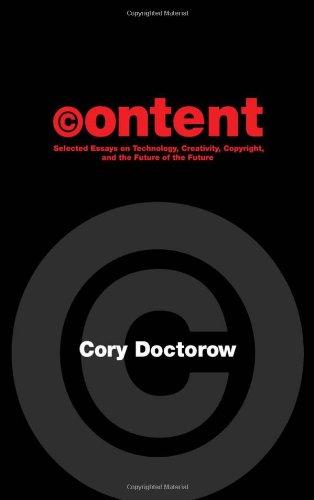
Content: Selected Essays on Technology, Creativity, Copyright, and the Future of the Future
by
Cory Doctorow
Published 15 Sep 2008
We make the future in the same way: we extrapolate as much as we can, and whenever we run out of imagination, we just shovel the present into the holes. That's why our pictures of the future always seem to resemble the present, only moreso. So the futurists told us about the Information Economy: they took all the "information-based" businesses (music, movies and microcode, in the neat coinage of Neal Stephenson's 1992 novel Snow Crash) and projected a future in which these would grow to dominate the world's economies. There was only one fly in the ointment: most of the world's economies consist of poor people who have more time than money, and if there's any lesson to learn from American college kids, it's that people with more time than money would rather copy information than pay for it.

Human + Machine: Reimagining Work in the Age of AI
by
Paul R. Daugherty
and
H. James Wilson
Published 15 Jan 2018
Extending Human + Machine Collaboration Eight New Fusion Skills for an AI Workplace Conclusion Creating Your Future in the Human + Machine Era Postscript Notes Index Acknowledgments About the Authors Those who can imagine anything, can create the impossible. —Alan Turing See, the world is full of things more powerful than us. But if you know how to catch a ride, you can go places. —Neal Stephenson, Snow Crash INTRODUCTION What’s Our Role in the Age of AI? In one corner of the BMW assembly plant in Dingolfing, Germany, a worker and robot are collaborating to build a transmission. The worker prepares a gear casing, while a lightweight robot arm, sensitive to and aware of its surroundings, picks up a twelve-pound gear.
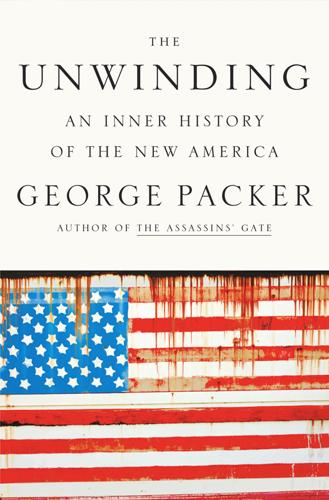
The Unwinding: An Inner History of the New America
by
George Packer
Published 4 Mar 2014
Over Christmas in 1994 they had spent a few days on the California coast brainstorming about how to start an Internet business. Hoffman had Thiel read a new sci-fi novel called Snow Crash, by Neal Stephenson—a dystopia in which large parts of America have been privatized into sovereign enclaves run by powerful entrepreneurs and mafias, a kind of fictional precursor to The Sovereign Individual. The novel’s characters escape the violence and social breakdown around them into virtual reality through a successor to the Internet called the Metaverse, where they represent themselves through avatars. Snow Crash gave Hoffman an entrepreneurial idea, and he soon left his job at Apple to start a dating website called socialnet.com, perhaps the first social network on the Web.
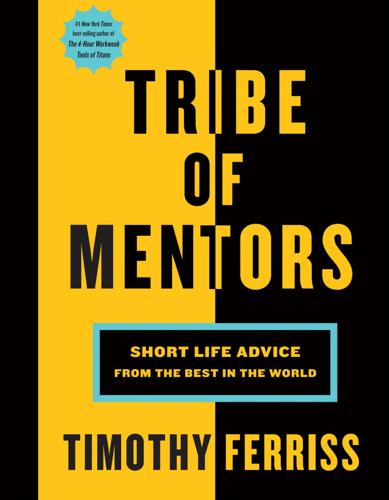
Tribe of Mentors: Short Life Advice From the Best in the World
by
Timothy Ferriss
Published 14 Jun 2017
How to Say No Neal Stephenson TW: @nealstephenson FB: /TheNealStephenson nealstephenson.com NEAL STEPHENSON is an author known for his speculative fiction works, variously categorized as science fiction, historical fiction, maximalism, and cyberpunk. His bestsellers include, among others, The Diamond Age, Cryptonomicon, The Baroque Cycle, and Snow Crash, which was named one of Time magazine’s “Top 100 All-Time Best English-language Novels.” He also writes nonfiction articles about technology in publications such as Wired magazine and has worked part-time as an adviser for Blue Origin, a company developing a manned suborbital launch system. Note from Tim: By now, you know what this is: the type of email that makes me cry and smile at the same time.
…
After graduation, Ryan started working on tech startups, was named to the Forbes “30 Under 30” list, went through Y Combinator, and authored several popular open source libraries in cryptography and blockchain technology. What is the book (or books) you’ve given most as a gift, and why? Or what are books that have greatly influenced your life? Sapiens by Yuval Noah Harari The Alchemist by Paulo Coelho Snow Crash by Neal Stephenson The Sovereign Individual by James Dale Davidson and Lord William Rees-Mogg If you could have a gigantic billboard anywhere with anything on it, what would it say and why? “Be present.” It’s very hard for almost all of us, and sometimes we need a reminder. The act of being present versus being preoccupied with the past or the future can have a massive impact on our happiness.

I Hate the Internet: A Novel
by
Jarett Kobek
Published 3 Nov 2016
These writers were influential amongst the men who ran Silicon Valley. These writers were also influential amongst the men who worked in subservient positions to the men who ran Silicon Valley. Baby had joined the ranks of writers like William Gibson, who wrote Neuromancer. Baby had joined the ranks of Neil Stephenson, who wrote Snow Crash and Cryptonomicon. Baby had joined the ranks of Cory Doctorow, who wrote fantasies about rebellion aimed at a teenaged audience. Despite being aimed at a teenaged audience, Cory Doctorow’s books were read by adults. Typically, these adults were UNIX systems administrators, network engineers, and Ruby developers who’d been rendered functionally illiterate by their collegiate computer science programs.

Age of the City: Why Our Future Will Be Won or Lost Together
by
Ian Goldin
and
Tom Lee-Devlin
Published 21 Jun 2023
In this way, the metaverse may help to develop what sociologist Ray Oldenburg described as ‘third places’ – contexts outside of home and work – that bring people from different worlds together in a common community life.29 And, unlike the real world, space in the metaverse is infinite. Imagining life in the metaverse takes us squarely into the realm of science fiction. In fact, it is in science fiction that we first see mention of the term. Neal Stephenson’s 1992 book Snow Crash describes a dystopian world in which the free market reigns supreme in all areas of life, most of society lives in destitution, and those workers who can afford the technology escape the dreariness of their lives by disappearing into the alternative reality of the metaverse. We have shown in this chapter that predicting the impact of new technology on society is a fool’s errand.
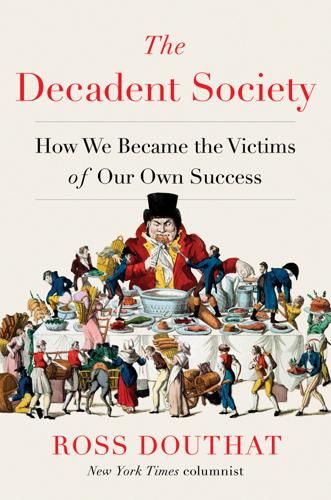
The Decadent Society: How We Became the Victims of Our Own Success
by
Ross Douthat
Published 25 Feb 2020
Lady Gaga has replaced Madonna, Adele has replaced Mariah Carey—both distinctions without a real difference—and Jay-Z and Wilco are still Jay-Z and Wilco. Except for certain details (no Google searches, no e-mail, no cell phones), ambitious fiction from 20 years ago (Doug Coupland’s Generation X, Neal Stephenson’s Snow Crash, Martin Amis’s Time’s Arrow) is in no way dated, and the sensibility and style of Joan Didion’s books from even twenty years before that seem plausibly circa 2012. … Not long ago in the newspaper, I came across an archival photograph of Ian Schrager and Steve Rubell with a dozen of their young staff at Morgans, the ur-boutique hotel, in 1985.
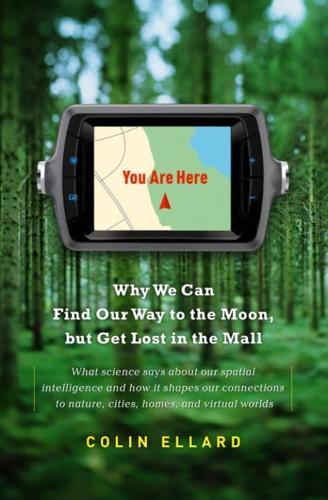
You Are Here: Why We Can Find Our Way to the Moon, but Get Lost in the Mall
by
Colin Ellard
Published 6 Jul 2009
In addition to the practical limitations posed by the problem of presenting consumers with decent-quality immersive experiences in virtual worlds, certain psychological factors were at play, and continue to lurk in the popular consciousness. William Gibson’s novel Neuromancer, Neal Stephenson’s Snow Crash, and the popular series of Matrix movies by the Wachowski brothers all present bleak visions of a future in which technology allows us to build virtual spaces that are indistinguishable from physical ones. In each of these cases, and in many others, we are given glimpses of dystopic worlds in which parallel virtual universes are used like weapons to produce mass delusions that crush the human spirit, or in which the virtual worlds we create become forums for the exercise of our basest impulses, untrammeled by the normal mores of social conduct and even freed from the operation of physical law.
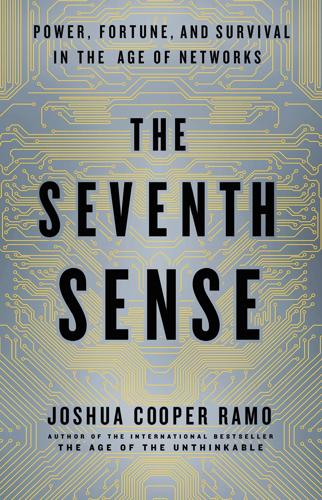
The Seventh Sense: Power, Fortune, and Survival in the Age of Networks
by
Joshua Cooper Ramo
Published 16 May 2016
It will not be an age in which we disappear into a blacked-out virtual reality—marked by a life lived on the digital side of an Oculus Rift, say, or inside the subversive and dystopian world of novels such as Ready Player One. Rather, real and virtual worlds will combine. We will be augmented by our connections, as reality is augmented by the HoloLens or Magic Leap goggles. Think of Snow Crash, Neal Stephenson’s masterpiece novel, for instance, in which characters move effortlessly between net and city. Or of the elegant design of the video game Ingress, which drew hundreds of thousands of us to a game board that had been laid atop the world’s cities in recent years. These cultural landmarks matter.

The Stack: On Software and Sovereignty
by
Benjamin H. Bratton
Published 19 Feb 2016
In a way, geopolitical reality is only catching up with the anticipations of the science fiction that has already explored the proliferation and institutionalization of data havens and data infrastructures, “community clouds,” cloud-based microreligions and macrostates, and others. I believe that Bruce Sterling coined the term data haven in his 1989 novel, Islands in the Net, and Neal Stephenson developed the notion closer to the normalization of an emergent political geography in Snow Crash (1992), in which characters pop in and out of passport-granting microstates, not bound to specific lands but instead distributed on street corners like 7–11s (the protagonist frequents one of these known as Mr. Lee's Hong Kong). Later in Stephenson's sprawling Cryptonomicon, the transhistorical plot stretches from Alan Turing's war years to the present day and locates a data haven in the fictional country of Kinatua, located between Borneo and the Philippines (domain .kk).
…
See also Earth designability of, 352–353 everywhere is, 355 human, 88 question of, 392n42 Sky Ear (Haque), 392n40 SkyGrabber, 401n45 Sleep Dealer (Rivera), 308 Smarr, Larry, 267–270, 285, 288 smart cities, 147–148, 160–162, 179, 181 smart dust, 201 smart grids, 92–96, 393n53 smart meters, resistance to, 283 smart space design questions, 201 smart surfaces, 198 Smart2020 (Climate Group), 93–94 Smithson, Robert, 53, 86, 178 Snow Crash (Stephenson), 400n42 Snowden, Edward, 35, 121, 287, 405n16 social body, inside/outside of, 22 social capital/social debt, 127 social imaginary, 233 socialism, 332 socialist pricing problem, 333, 369 social media, 9, 262–263, 428n58, 431n70 social nudity, 285 social space, 125–128, 169, 424n41 social systems City layer as, 157–159 classlessness in, 439n65 inclusion/exclusion in, 308–309, 311–312, 317 social-technical form, emergence of a new, 176 social Turingism, 80 social wallet, 127 software architecture, 166 constructing new civilizations, 181 design, 254–255 envelopes, 167 interfaciality, 167 language versus technology dichotomy, 60 law as code, 327 mixed programs, designing for, 168–172 and sovereignty, 20, 303 translegal forms, 355–356 software espionage, 398n21 software program, 43 software-space coprogramming, 237–238 solar energy, 106 Soleri, Paolo, 178–179 solidification and liquefaction, 379n9.
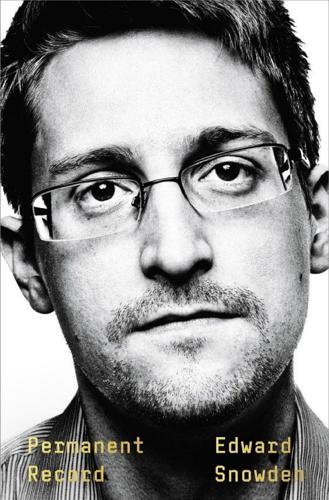
Permanent Record
by
Edward Snowden
Published 16 Sep 2019
It would take me a while to figure out whether the dimness meant that I was at my mother’s condo or my father’s one-bedroom, and I’d have no recollection of having been driven between them. Every day became the same. It was a haze. I remember reading The Conscience of a Hacker (aka The Hacker’s Manifesto), Neal Stephenson’s Snow Crash, and reams of J. R. R. Tolkien, falling asleep midchapter and getting the characters and action confused, until I was dreaming that Gollum was by my bedside and whining, “Master, Master, information wants to be free.” While I was resigned to all the fever dreams sleep brought me, the thought of having to catch up on my schoolwork was the true nightmare.
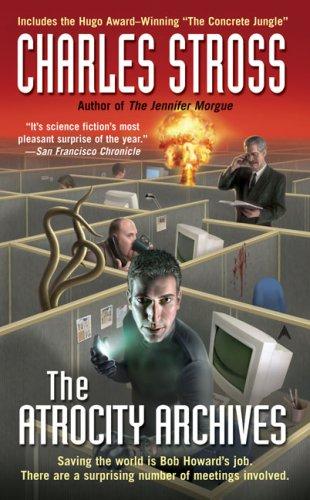
Atrocity Archives
by
Stross, Charles
Published 13 Jan 2004
Ford's Web of Angels onward, we've had hackers exploiting networks to find the truth about what's really going on. Sometimes the hacker archetype overlaps with the guy-with-a-gun (as in Ken MacLeod's The Star Fraction or William Gibson's Johnny Mnemonic), or the gamer-with-a-virtual-gun (in film, Mamoru Oshii's Avalon), or even both (Hiro Protagonist, in Neal Stephenson's Snow Crash). Mao remarked, "power grows from the barrel of a gun"--both in real life and in fiction--and if guns are about power, then hacking is about secret knowledge, and knowledge is also power. In fact, when you get down to it, what the fictional hacker has come to symbolize is not that far away from the fictional spy--or the nameless narrator of one of H.
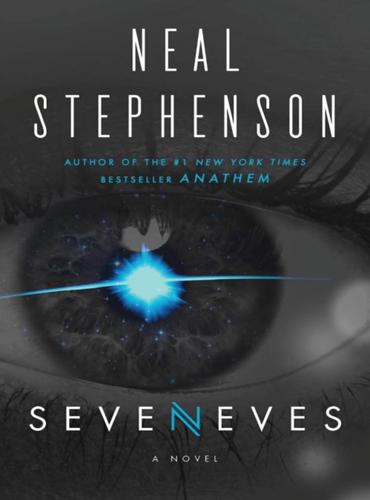
Seveneves
by
Neal Stephenson
Published 19 May 2015
Endpaper Illustrations About the Author NEAL STEPHENSON is the author of Reamde, Anathem, and the three-volume historical epic the Baroque Cycle (Quicksilver, The Confusion, and The System of the World), as well as Cryptonomicon, The Diamond Age, Snow Crash, and Zodiac. He lives in Seattle, Washington. Discover great authors, exclusive offers, and more at hc.com. Also by Neal Stephenson Some Remarks Reamde Anathem The System of the World The Confusion Quicksilver Cryptonomicon The Diamond Age Snow Crash Zodiac Copyright Illustrations by Weta Workshop; copyright © by Neal Stephenson Lead Illustrator: Christian Pearce Creative Research: Ben Hawker and Paul Tobin This book is a work of fiction.
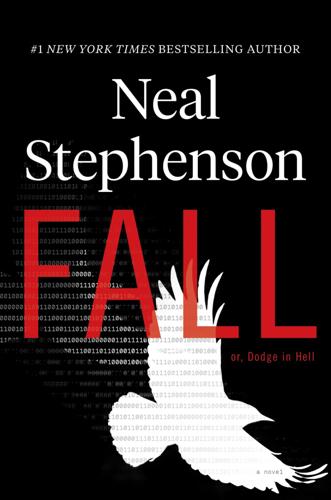
Fall; Or, Dodge in Hell
by
Neal Stephenson
Published 3 Jun 2019
(with Nicole Galland), Seveneves, Reamde, Anathem, The System of the World, The Confusion, Quicksilver, Cryptonomicon, The Diamond Age, Snow Crash, and Zodiac, and the groundbreaking nonfiction work In the Beginning . . . Was the Command Line. Discover great authors, exclusive offers, and more at hc.com. Also by Neal Stephenson The Rise and Fall of D.O.D.O. (with Nicole Galland) Seveneves Some Remarks Reamde Anathem The System of the World The Confusion Quicksilver Cryptonomicon The Diamond Age Snow Crash Zodiac Copyright This is a work of fiction. Names, characters, places, and incidents are products of the author’s imagination or are used fictitiously and are not to be construed as real.
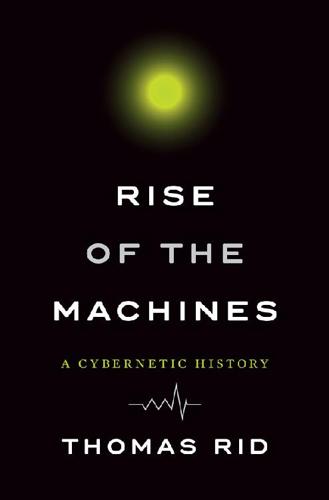
Rise of the Machines: A Cybernetic History
by
Thomas Rid
Published 27 Jun 2016
Martin and Vernor Vinge (New York: Dell, 1981). 34.James Frenkel and Vernor Vinge, True Names and the Opening of the Cyberspace Frontier (New York: Tor, 2001). 35.Vinge, True Names, 250. 36.Ibid. 37.Dmitry (Dima) Adamsky, “The 1983 Nuclear Crisis,” Journal of Strategic Studies 36, no. 1 (2013): 4–41. 38.One science fiction novel that is sometimes credited with articulating cyberspace as the “Metaverse” is Neal Stephenson, Snow Crash (New York: Bantam, 1992). 39.William Gibson, “Cyberpunk Era,” Whole Earth Review 63 (Summer 1989): 80. 40.“William Gibson: Live from the NYPL,” New York Public Library, April 19, 2013, 19:00, YouTube video, posted on July 6, 2013, http://youtu.be/ae3z7Oe3XF4. 41.Ibid. 42.William Gibson, “Burning Chrome,” Omni 4, no. 10 (July 1982): 76. 43.William Gibson, Neuromancer (New York: Ace Books, 1984), 10–11. 44.Ibid., 69. 45.Larry McCaffery, “An Interview with William Gibson,” Mississippi Review 16, no. 2/3 (1988): 224. 46.Ibid. 47.William Gibson, Count Zero (New York: Arbor House, 1986), 33. 48.For a review of the Commodore 64 version of Moondust, see “LGR—Moondust—Commodore 64 Game Review,” YouTube video, posted June 30, 2009, http://youtu.be/DTk4SqKL-PA. 49.Lanier recounts the story in Jaron Lanier, “Virtually There,” Scientific American 284, no. 4 (2001): 68. 50.See Thomas G.
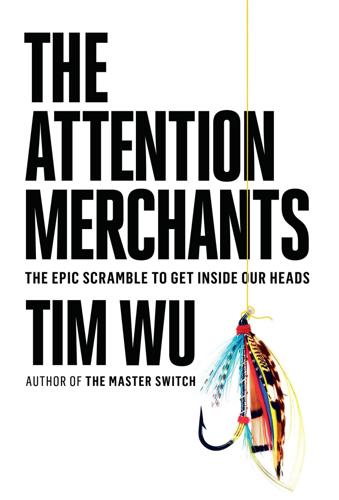
The Attention Merchants: The Epic Scramble to Get Inside Our Heads
by
Tim Wu
Published 14 May 2016
Despite a certain whiff of excitement and novelty, neither personal computers nor online networks were seen as particularly entertaining, except to those who used them to play video games. The machines had a devoted cult following, and there was a mystique to them as portals into the mysterious virtual world named “Cyberspace” as depicted in novels like William Gibson’s Neuromancer or Neal Stephenson’s Snow Crash. But most who had a computer usually kept it in the den or basement; the machine itself was unwieldy and ugly, consisting of a large, boxy body and a screen smaller than today’s laptops. In an age before widespread use of graphical interfaces like Windows, a glowing text, orange or green, was still what one faced; it had been that way since the first fully assembled home computers with dedicated screens, the Apple II and the Commodore PET, were marketed in 1977.*1 As for a mouse, that was still a creature known to reside in a small hole.

The Cobweb
by
Neal Stephenson
and
J. Frederick George
Published 31 May 2005
I just wanted to remind you to take the meat out of the freezer—some of it’s about to expire.” “I’ll take care of it,” Clyde said. “You hurry home now, okay?” “That’s the plan, Clyde,” she said. “That’s the whole idea.” about the authors Neal Stephenson is the author of THE SYSTEM OF THE WORLD, THE CONFUSION, QUICKSILVER, CRYPTONOMICON, THE DIAMOND AGE, SNOW CRASH, and other books and articles. J. Frederick George is a historian and writer living in Paris. Also by Neal Stephenson and J. Frederick George INTERFACE Praise for Interface also by Neal Stephenson and J. Frederick George “A Manchurian Candidate for the computer age.” —Seattle Weekly “Qualifies as the sleeper of the year, the rare kind of science-fiction thriller that evokes genuine laughter while simultaneously keeping the level of suspense cranked to the max.”
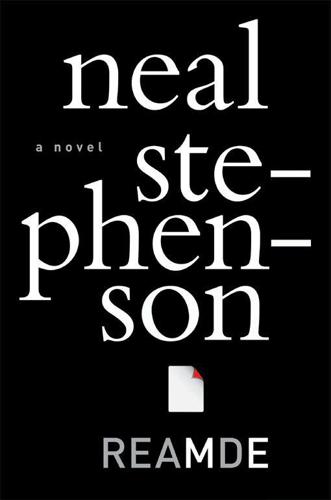
Reamde
by
Neal Stephenson
Published 19 Sep 2011
In short, none of the geographical description in Reamde can be expected to tally with the real world or its high-quality digital representations, and so readers are encouraged to enjoy it as what it is—a work of fiction—and leave it at that. ABOUT THE AUTHOR Neal Stephenson is the author of Anathem; the three-volume historical epic the Baroque Cycle (Quicksilver, The Confusion, and The System of the World); Cryptonomicon; The Diamond Age; Snow Crash, which was named one of Time magazine’s top one hundred all-time best English-language novels; and Zodiac. He lives in Seattle, Washington. www.nealstephenson.com Visit www.AuthorTracker.com for exclusive information on your favorite HarperCollins authors. PRAISE “Stephenson has a once-in-a-generation gift: he makes complex ideas clear, and he makes them funny, heartbreaking and thrilling.”
…
—Seattle Times “For all of his achievements, Neal Stephenson’s most impressive may be his ability to attract a following equal parts hacker and literati… It’s not just that his prose is smooth and often witty or that his intelligence is wide-ranging and speculative, but that he wrestles with concepts … in ways that would shame most ‘literary’ novelists.”—Los Angeles Times OTHER WORKS Anathem The System of the World The Confusion Quicksilver Cryptonomicon The Diamond Age Snow Crash Zodiac CREDITS Cover design by James Iacobelli COPYRIGHT This book is a work of fiction. References to real people, events, establishments, organizations, or locales are intended only to provide a sense of authenticity and are used fictitiously. All other characters, and all incidents and dialogue, are drawn from the author’s imagination and are not to be construed as real.
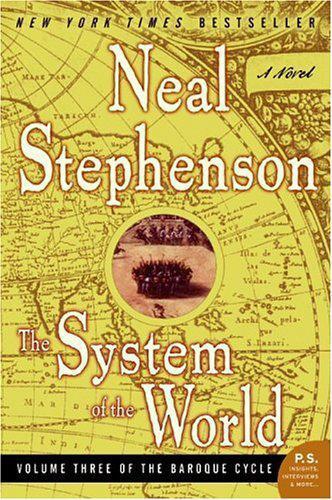
The system of the world
by
Neal Stephenson
Published 21 Sep 2004
The greatest share of my gratitude, always, goes to them. Neal Stephenson May 2004 About the Author NEAL STEPHENSON is the author of the novels Quicksilver, The Confusion, Cryptonomicon, The Diamond Age, Snow Crash, and Zodiac. He lives in Seattle, Washington. Don’t miss the next book by your favorite author. Sign up now for AuthorTracker by visiting www.AuthorTracker.com. Also by Neal Stephenson The Confusion Quicksilver Cryptonomicon The Diamond Age Snow Crash Zodiac Credits Jacket design by Richard L. Aquan Jacket illustration of world map by Frederick de Wit from De Zee Atlas Amsterdam, 1662, Birmingham Library, UK This book is a work of fiction.
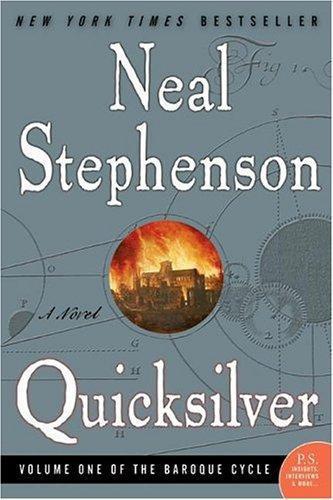
Quicksilver
by
Neal Stephenson
Published 9 Sep 2004
As seen through Stephenson’s eyes the late seventeenth century is endlessly fascinating, and so is the focus on the intersection of religion and science... The late seventeenth century saw an explosion of intellectual brilliance that resembles nothing so much as it does an overflow from a boiling cauldron. So does Quicksilver.” Publishers Weekly: “Stephenson, once best known for his techno-geek SF novel Snow Crash, skillfully reimagines empiricists Newton, Hooke, and Leibniz, and creatively retells the birth of the scientific revolution. He has a strong feel for history and a knack for bringing settings to life. Expect high interest in this title, as much for its size and ambition, which make it a publishing event...”
…
Pages: “The joy of entering le monde Stephenson is that of surrender. Give up any and all preconceived notions of historical consistency, linear scientific progress, and fail-safe happy endings, and you’ll enjoy the ride ... you’ll be begging for more.” ALSO BY NEAL STEPHENSON Cryptonomicon The Diamond Age Snow Crash Zodiac Credits Maps by Nick Springer Family trees created by Lisa Gold, illustrated by Jane S. Kim Conic sections illustration, a digital recomposition of eight figures from Claude Richard’s 1655 edition of Apollonius of Perga’s Conic Sections, by Alvy Ray Smith Case stamp art by Laura Hartman Maestro Jacket design by Richard L.
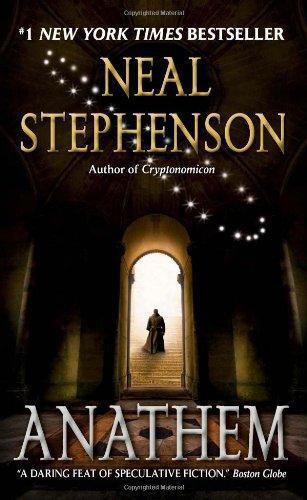
Anathem
by
Neal Stephenson
Published 25 Aug 2009
About the Author NEAL STEPHENSON is the author of seven previous novels. He lives in Seattle, Washington. www.nealstephenson.com Visit www.AuthorTracker.com for exclusive information on your favorite HarperCollins author. ALSO BY NEAL STEPHENSON The System of the World The Confusion Quicksilver Cryptonomicon The Diamond Age Snow Crash Zodiac Credits Jacket design by Ervin Serrano Jacket photographs by Yolande De Korte/Dave Wall @ Arcangel Images Copyright This book is a work of fiction. The characters, incidents, and dialogue are drawn from the author’s imagination and are not to be construed as real. Any resemblance to actual events or persons, living or dead, is entirely coincidental.
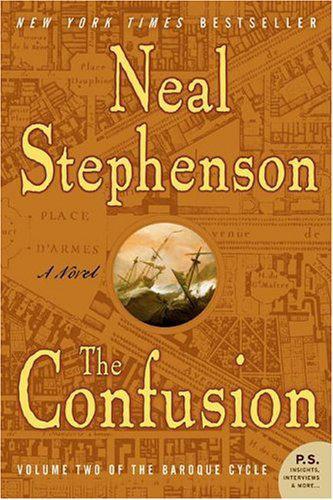
The confusion
by
Neal Stephenson
Published 13 Apr 2004
At a young age, finding himself in a pretty Humour for the writing of Romances, and the discourse of Natural Philosophy and Technologick Arts, he took up the Pen, and hath not since laid it down. Credits Jacket design by Richard L. Aquan Jacket illustration: 1746 plan of Versailles/Historic Urban Plans, Inc. Also by Neal Stephenson Quicksilver Cryptonomicon The Diamond Age Snow Crash Zodiac The epigraph on page 292 is from The Leibniz-Arnauld Correspondence, edited and translated by H. T. Mason. Published by Manchester University Press, Manchester, England, 1967. The epigraph on page 646 is from Robert Merrihew Adams, Leibniz: Determinist, Theist, Idealist. Published by Oxford University Press, Oxford and New York, 1994.
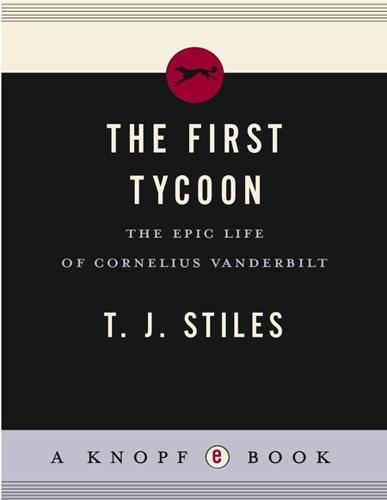
The First Tycoon
by
T.J. Stiles
Published 14 Aug 2009
By the time he reached New York—ahead of his rival—the wooden pole had torn through to his breastbone, leaving a permanent scar. Between and after his scheduled ferry runs, Cornele looked for whatever work he could get, even sleeping in his boat at Whitehall Slip in order to be on hand when a job came up. When autumn arrived and blinding sheets of sleet and snow crashed across the harbor, many nervous merchants who hurried from Pearl Street countinghouses to the waterfront trusted the boy to deliver messages to their vessels out in the bay. But the image of young Vanderbilt as a cursing, isolated water rat cannot be entirely accurate. If he had learned anything from his parents, it was that business was a matter of relationships.